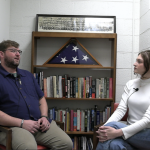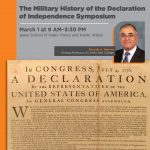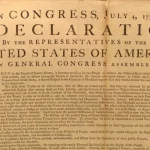World War II Records
World War II, European Theater
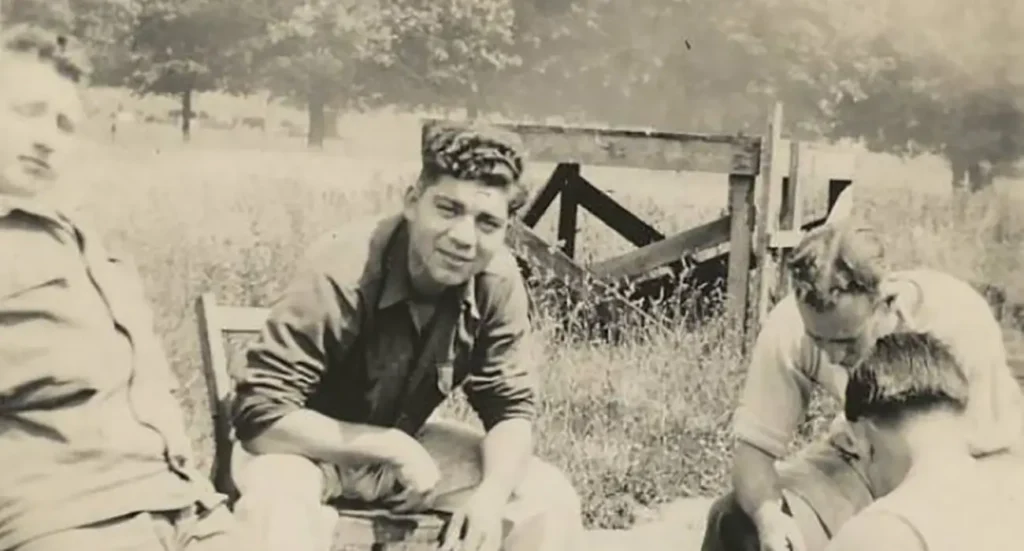

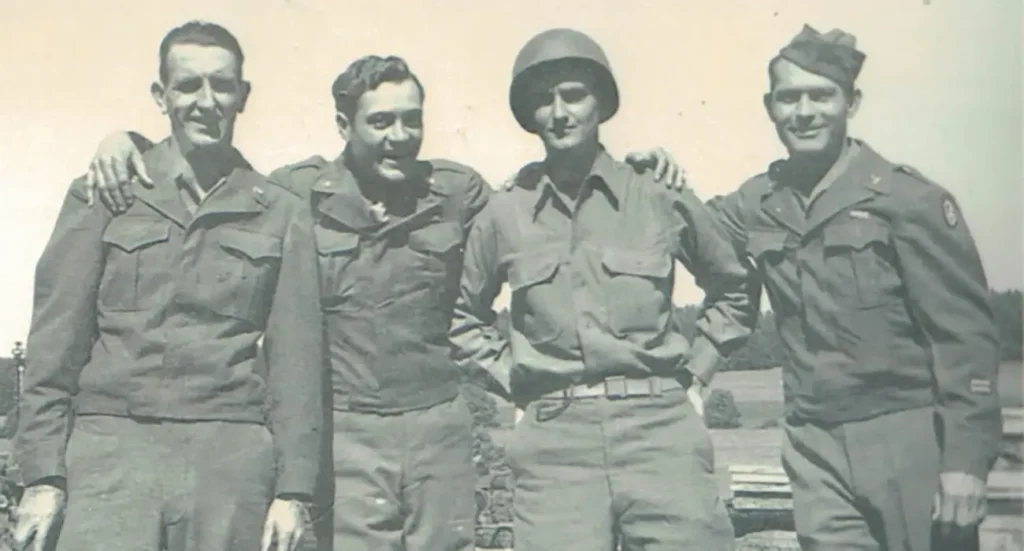
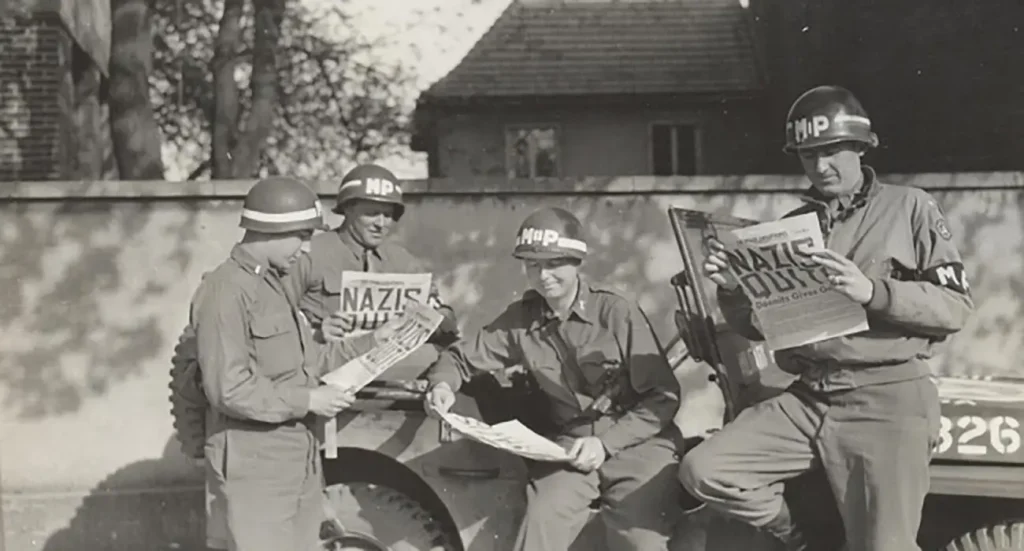

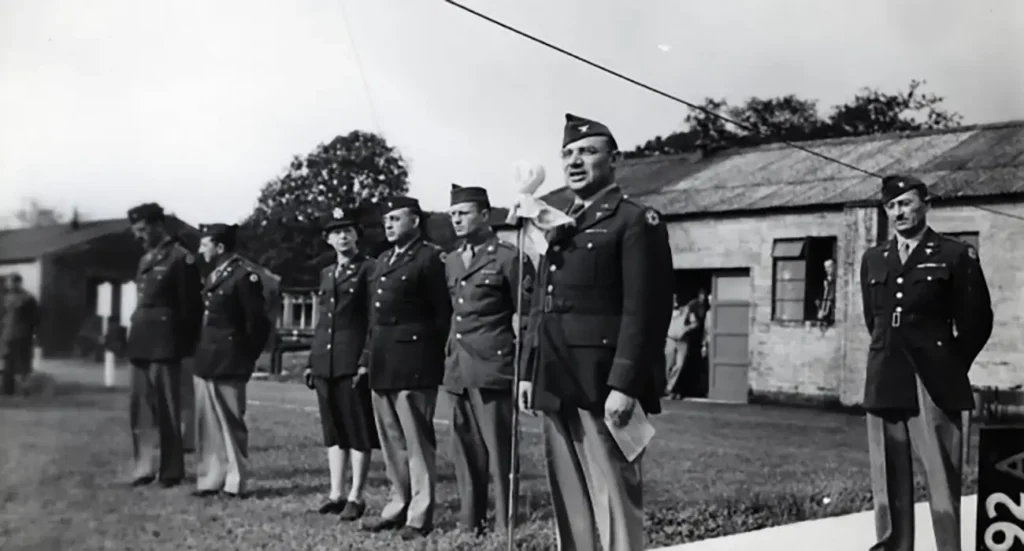
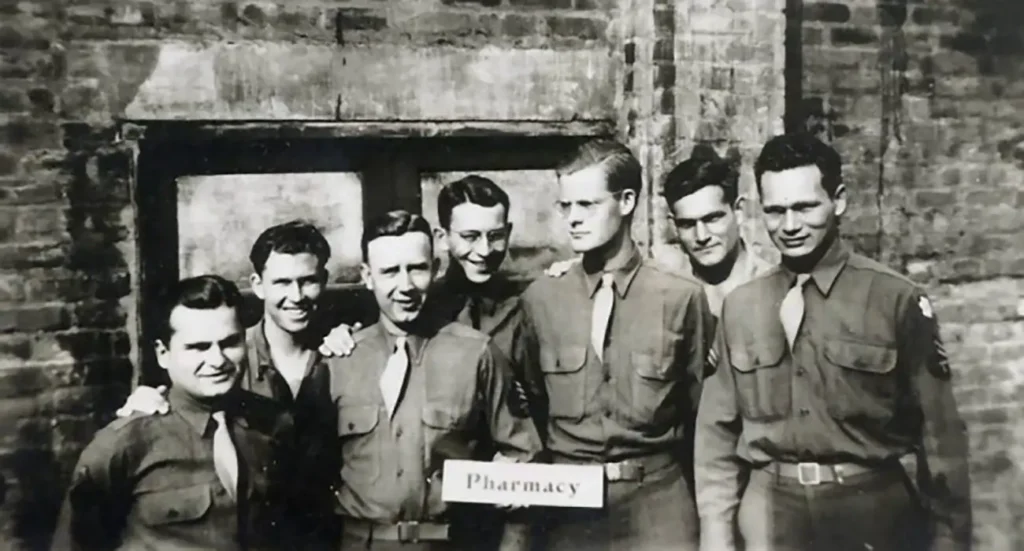
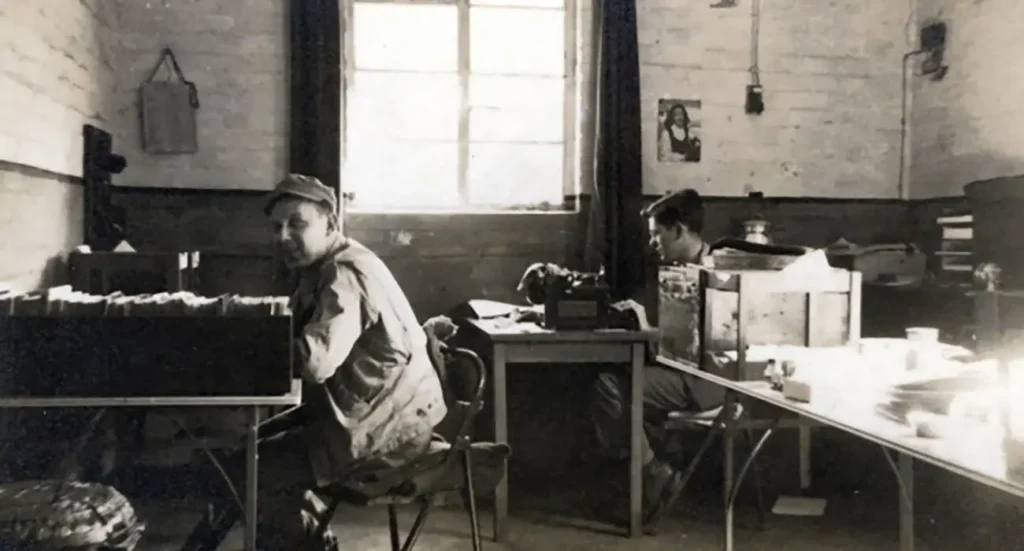
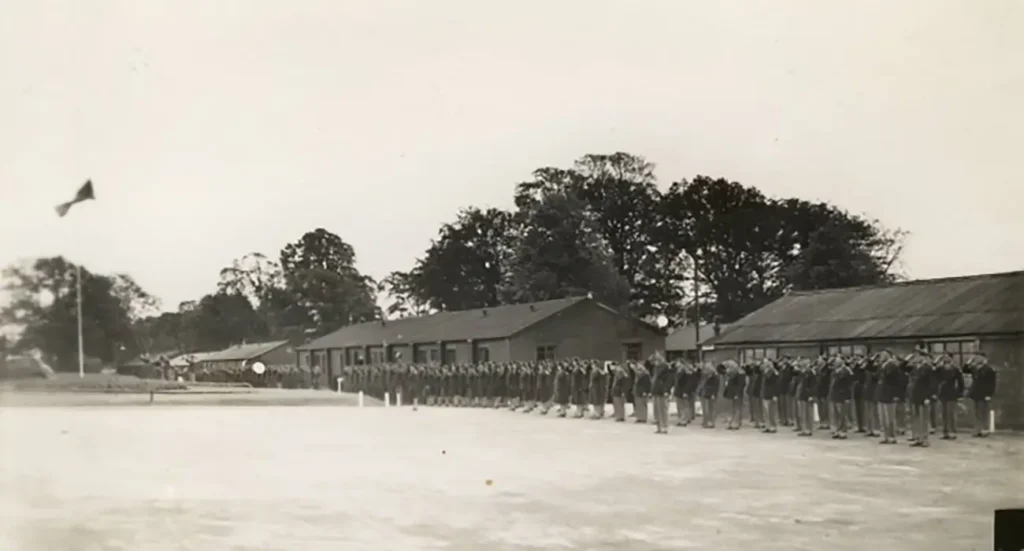
Eugene Adkins (Army Air Corps/Air Force) Audio | Documents
Eugene Adkins was born in Unicoi County in 1919, and in his youth he developed a fascination with aircraft and flying. His father was a career Army man, and Adkins enlisted at Fort Oglethorpe’s Civilian Cadet Training Camp in 1936. This camp trained him for the cavalry, and while he was determined to fly, his training aided his development as a soldier. Adkins joined the Army Air Corps in 1940 and became a rear turret gunner on B-18 bombers. He then learned to work on B-17s as “floating crew,” filling in where needed. He operated the gun turrets aboard the Memphis Belle for several missions until he was injured in the line of duty. He later reenlisted in the Air Force and flew as a crew chief during the Korean War.
Earl Ailor (Army) Video | Transcript
Earl Ailor was part of the 47th Infantry ordered to Fort Bragg in August 1941. Ailor was part of an amphibious assault between November 8-16, 1942 at Safi, French Morocco known as Operation Torch.
James J. Akins (Army Air Corps) Video | Transcript
James J. Akins was born on December 14, 1922, and joined the service in 1942. Akins flew a B-24 Liberator in the 450th Bomb Group, 15th Air Corps. Akins fought German aircraft throughout Southern Italy and was shot down over Austria on May 24, 1944. Akins was sent to Stalag Luft 3, a prisoner-of-war camp. Akins survived the war and returned home to Tennessee.
Richard T. Alexander (I) (Army) Audio | Transcript
Born in 1917, childhood in Nashville, New York City, Berlin; father worked as an educator; spent a year in Germany beginning in 1925; recalls inflation in the Weimar Republic; attended school in Germany in 1930; describes Hitler’s rise to power and National Socialist initiatives like Winterhilfe; emotional lift Hitler gave Germans; drafted on October 20, 1942 in Canton, North Carolina; Tennessee Maneuvers, 1943; 83rd Division Artillery, aerial liaison artillery observer; Omaha Beach, Normandy to east of the Elbe River, 1944 to October, 1945; Recipient of Air Medal with Oak Leaf Cluster, Bronze Star, and Silver Star.
Richard T. Alexander (II) (Army) Audio | Transcript
Post-war; how his father came to be in the Office of Military Government in Germany after the war, until 1951; German education system; return visits to Germany; University of Tennessee (EdD, 1955); Returned to math and science teaching post in Haywood County, NC and part-time at Adelphi University until 1957; Professor at Ball State University in Muncie, IN until retirement in 1982.
Eilel M. Archilla (Army Air Corps/Air Force) Audio | Transcript
Eliel Archilla was part of the 8th Air Force Squadron that flew missions across the English Channel into France. His squadron supported the American troops throughout France with the primary responsibility to support Patton’s Third Army. After the war in Europe officially ended, Archilla was stationed in Guam before being released from active duty.
Paul Arndt (Army) Audio | Transcript
Paul Arndt was part of the 80th Division and served in Nuremberg, Germany at the war’s end. Arndt’s account details his relationships with German civilians near the end of the conflict.
Arthur Arseneault (Navy/Merchant Marine) Audio | Transcript
Father in the Navy as a pharmacist mate from 1918 to 1946; Arsenault born in Somerville, MA in 1924; Growing up in New England; Living in Guam as a military dependent in early 1930s; Boy Scout in New England as a teenager; thoughts on skipping grades in school, postgraduate high school classes, and working construction before old enough for military service at the start of World War II; father’s service in World War II as a hospital administrator in New York; Attending Merchant Marine Academy at Hyannis, MA in March 1943; Pre-commissioning training in the Gulf of Mexico in 1944 on USS Griggs; duty as superintendent of shipbuilding in New York and New Jersey in spring of 1945; Combat Information Center officer at Treasure Island, CA and attending deep sea diving school in summer 1945; carrying men back from Europe after World War II on board USS LeJeune; Explosive Ordinance Disposal School at Indianhead, MD in 1946; Frogman in Underwater Demolition Team at Little Creek, VA; UDT duty on USS Pocono in Mediterranean and Persian Gulf in 1948; on battleship USS Mississippi doing oceanographic and research work in the Pacific; Scripps Institution of Oceanography at La Jolla, CA and Northwestern University in 1952. Meeting wife while she was a navy nurse in San Diego; Oceanographic work in North Atlantic; Naval Postgraduate School in Monterey, CA; Sonar School in Key West, FL in 1954; officer on the destroyer USS Haynesworth in the Mediterranean; Explosive Ordinance Disposal Officer in Charleston, SC; recovery opertaions for dropped nuclear weapon off the coast of Savannah, GA and Hunter Air Force base in 1958; 2nd Air and Naval Gunfire Liaison Company with Army Airborne Divisions from 1963 to 1965 that involved the intervention in the 1965 Dominican Civil War with the 82nd; reflections on weather at sea, family’s military service, raising a family while in the military; retirement after 25 years at the same time Vietnam is escalating; post-service work with Boy Scouts of America in 1966, Department of Health for Georgia from 1967 to 1970, and Cobb County, GA police department until 1987; retirement in Knoxville and community work with civic organizations like the Boy Scouts and the Military Order of the World Wars.
Francis O. Ayers (Army) Audio | Transcript
Born December 31, 1925 in Pittsburgh, PA; father worked for Gulf Oil Corporation as a traffic manager, and mother stayed at home; enlisted Dec. 1943, U.S. Army; 501st Parachute Infantry Regiment of the 101st Airborne Division; attitudes toward death upon enlisting; time in England and France prior to combat; Battle of the Bulge, Ardennes, Christmas in 1944; Two weeks leave in London; studied Business Administration at Waynesburg College, 1950-53; Factory Engineer Representative, 1953-59, and Sales Engineer 1959-1973.
Jack L. Bailey (Army Air Corps) Audio | Transcript
Jack L. Bailey was a Boeing 737 bomber pilot who was shot down over Germany on February 10, 1944. He was captured, interrogated, and sent to the prisoner-of-war camp called Stalag Luft 6, in the eastern part of Poland.
Warren H. Baker (Army Air Corps) Audio | Transcript
Warren H. Baker was an engineer gunner on a B-24 bomber that was shot down over Munich, Germany on July 12, 1944. Baker and his crew managed to crash their plane onto the Bavarian Alps where they were captured by German infantry. Eventually, Baker ended up in the Dulag Luft Interrogation Camp.
Sam Balloff (Army) Audio | Transcript
Born 1923, LaFollette, TN; recollection of parents’ emigration to America, mother from Romania, father from Russia; father owned a clothing store called Balloff’s; childhood in LaFollette; Jewish practices; attended private Presbyterian school at McCallie Boarding School in Chattanooga, 1940-41; recalls impact of Oak Ridge on LaFollette; attended Vanderbilt, 1941-42; Zeta Beta Tau fraternity; enlisted Dec. 1942; 78th Infantry Division, 309th Field Artillery service battery, truck driver; Battle of the Bulge, Remagen Bridge; Aachen to Kassel; discharged, February 1946; returned to Vanderbilt following the war; continued working for his father’s store; opened additional stores in Oak Ridge and Knoxville.
Rita Bateman (Red Cross) Audio | Transcript
Originally from Canada, but living in Tennessee during World War II; volunteering with the Red Cross; working in Europe towards the war’s end in 1945; Red Cross showmobile performer for the Army of Occupation in Germany until 1946; Tour with the Red Cross in Pusan, Korea; returns to Tennessee and earns a Doctorate from the University of Tennessee in 1960.
Richard Barrick (Army) Audio | Transcript
Born 1925, childhood in St. Louis, MO; father died shortly after birth, working mother, raised by aunt; drafted 1943 after high school in Kansas City, MO; 3rd Army, 49th Armored Infantry Regiment, forward observer scout; Trained at Camp Polk, LA; arrived D-Day plus 60, Battle of the Bulge, Bronze Star; discusses post-war life and reunions with unit.
Joachim Belli (Germany Army) Audio | Transcript
Joachim Belli was born in Bremen Germany in November 1922. After joining the Hitler Youth program at 13, Belli joined the German army in 1940 and ended up with the 22nd Infantry Division in the Artillery Regiment 22. Belli’s account discusses Germany in the 1940s, the reaction among children growing up in the Third Reich, and German infantry experiences. Belli eventually spent five years as a prisoner of war in Russia. Belli eventually opened up a business in Miami and retired in Chattanooga, Tennessee.
Philip Benziger (Army Air Corps) Audio | Transcript
Family tied to Knoxville history going back to before the Civil War; Growing up in Knoxville in the 1920s and 1930s; attended UT Knoxville before the war; working for TVA when Pearl Harbor happened; volunteering in the Army Air Corps; Training across the US as a pilot and then a tail gunner; assigned to a B-24 bomber in the 758th squadron of the 459th Bomb Group; deployment to European Theater by flying down to Brazil and then over to West Africa; Flying out of captured German Air Bases in Italy; 50 Missions including over Rome, Vienna and Ploiesti, Romania. Returning home and going back to school at UT Knoxville; working all around the world as a geologist on hydroelectric projects for Charles T. Main Company out of Boston, MA; getting out of Iran during the revolution while working on a project.
Sidney Bishop (Army) Audio | Transcript
Born July 17, 1921, in Milledgeville, Tennessee; father was a farmer; Volunteered for service on October 28, 1942; Served in Company A, 18th Tank Battalion, 8th Armored Division. Saw combat in France in 1945; Crossed the Roer River in February 1945, Crossed the Rhine on March 26th and helped eliminate the Ruhr Pocket. Discusses post-war life and active engagement in veterans organizations.
William F. Bopp (Army) Audio | Transcript
William F. Bopp was part of Army’s Company A, 7th Armored Infantry Battalion, 8th Armored Division. This interview deals heavily with Bopp’s family history where his ancestors fought in the American Revolution, the Civil War, and the Spanish-American War. Bopp discusses the news of Pearl Harbor, FDR’s fireside talks, and his experiences in Europe.
Joe Boyd (Army Aviation) Video 1 | Video 2 | Transcript 1 | Transcript 2
Joe Boyd joined the Army before war was declared in December 1941. He graduated from flight school and flew transport planes. Boyd served throughout Africa, including the Gold Coast, Ethiopia, and Egypt. Boyd’s account details various transport operations across the Atlantic and throughout Africa.
Jason R. Byrd (Army) Video 1 | Video 2 | Transcript 1 | Transcript 2
Jason R. Byrd enlisted in the army on November the 28th, 1939 at the age of sixteen. He was part of the 1st Combat Engineers, which was attached to the 1st Infantry Division during World War II. When Byrd was not building bridges or removing mines, he was with the infantry. Byrd fought throughout the Mediterranean, including some parts of Africa and Italy.
Fred Campbell (Army) Video | Transcript
Fred Campbell joined the army on October 10, 1944, at eighteen years old. After his journey across the Atlantic, Campbell was sent to Metz, Germany, and eventually crossed the Rhine. Campbell’s account details European combat and the state of Germany near the end of the war.
William F. Cashin (Army) Video | Transcript 1 | Transcript 2
William F Cashin was part of Company A, 7th Armored Infantry Battalion, 8th Armored Division when he joined the army in 1942. Cashin’s account details horrific French winter conditions, fights with German soldiers, and the camaraderie among fellow soldiers.
Stephen Cassell (Army) Video | Transcript
Stephen Cassell was part of the 66th Infantry that was sent to Austria. Cassell’s account details his training, various accounts of combat with German soldiers, and his travels throughout Europe.
Bill Chamberlain (Army Aviation) Video | Transcript
Bill Chamberlain was a prisoner of war in Germany between 1944-1945. He was fifteen when he joined the service, using his nineteen-year-old brother’s certificate. He joined the army and eventually flew with the B-17G 96th Bomber Group. Chamberlain’s account details his crew’s bombing runs over France and Berlin, Germany. His plane was shot down and he was sent to a German prisoner-of-war camp.
Edward Chandler (Army) Video | Transcript
Edward Chandler joined the army in October 1943. He was part of the 245th Engineer Combat Battalion in A Company. Chandler’s account describes combat with German forces, meeting Soviet soldiers in Austria, and liberating British soldiers.
Simon Chilewich (I) (Army) Audio | Transcript
Born April, 1919 in Bialystok, Poland; father worked in the family’s animal/cattle hide business; grew up in a Warsaw ghetto; encounters with anti-Semitism; grandparents emigrated to Palestine, 1928; graduated gymnasium (high school) in Poland, 1936; moved to England to attend London School of Economics and simultaneously the Royal Academy of the Dramatic Arts; recollections of Winston Churchill; student culture in London; response to the Munich Pact; arrived in the United States on September 5, 1939 on the Champlain; lost 138 family members to the Holocaust; found work in Andrews, North Carolina in 1940 supplying sole leather to the Army; father begins new business in hides futures trading; drafted to Camp Lee, Virginia, 1943; Intelligence School, Camp Ritchie, MD; attains rank of Master Sergeant.
Victor M. Ciffichiello (Army) Video | Transcript
Victor M. Ciffichiello was part of Company A, 7th Armored Infantry Battalion, 8th Armored Division in World War II. He joined in 1942. This interview was with William F. Cashin at a division reunion in 1987.
James L. Clark (Army Medical) Video | Transcript
James L. Clark joined the U.S. Army Medical Department on December 10, 1940. Clark worked in army ships as a medic to take care of troops on the way to the European front and to bring prisoners of war to the United States. Clark crossed the Atlantic 22 times during his time of service.
Charles H. Coolidge (Army) Audio | Transcript
Prewar life in Signal Mountain and Chattanooga, TN; family owned Chattanooga Printing & Engraving Co.; enlistment, June 1942; basic training, Ft. McClellan, AL; Camp Edwards, MA; assigned 36th Infantry Division, 141st Infantry Regiment, 3rd Battalion, M Company; 27 months overseas; North Africa—Oran, Casablanca; Italy—Salerno, San Pietro, Rapido River, Monte Cassino, Anzio, Silver Star action at Velletri; France— Medal of Honor action at Hill 623, near Belmont-sur-Buttant in the Vosges Mountains; Germany; Austria; also awarded Bronze Star; postwar, returned to Chattanooga; Contact Rep. for the Veterans Administration; returned to Chattanooga Printing and Engraving, 1949; manager and partner, 1974 to retirement.
Charles H. Coolidge (II) (Army) Audio | Transcript
Action at Salerno, Italy and death of friend, Joe DelaGarza; miscommunication on the front at San Pietro, Italy; truce at Rapido River, Italy; civilians and their homes during combat in the winter of 1944, France (navigating artillery fire and close call with a defective artillery shell); moving off the front at the Siegfried Line; battlefield presentation of the Medal of Honor in Ulm, Germany; transitioning to civilian life; applying military skills and training after war.
Grady Corley (Army) Audio | Transcript
Born in Greenwood, South Carolina, 1916; parents worked in cotton mill; moved to Virginia, then back to Kingsport; began working as a paper boy for the Bristol Herald Courier around 1930; left high school in 1934; found work at Eastman Company, yarn production and machine maintenance; enlisted in Army National Guard, Feb. 1941; Trained at Camp Forrest, TN, Fort Sill, OK, and Camp Roberts, CA; 191st Field Artillery Battalion; artillery mechanic; deployed to Europe April, 1944; C Battery, 959th Field Artillery Battalion attached to the XIX Corp; Landed Omaha Beach, June 24, 1944; post-war, returned to job at Eastman; retired as foreman in Fiber Divisions Maintenance after 45 years of service.
William (Bill) Lemaster Cox, Jr. (Army) Photos | Documents
Bill Cox was born on May 4, 1924 in Knoxville, TN. He lied about his age at 17 and volunteered for the army. After basic training, he deployed to England to train for D-Day. He survived the invasion and helped liberate Paris from Nazi occupation. He was among the Americans that marched up the Champs-Elysees to the Arc de Triomphe. He fought at the Battle of the Bulge. His unit went on to Munich where they amassed and regrouped. From there, Cox and his unit were among the very first troops to enter the concentration camp at Dachau. On April 29, 1945, three months after surviving the Battle of the Bulge, he began to tend to the needs of the Dachau survivors. After the war, he returned to Knoxville and worked for Union Carbide in Oak Ridge. He was a steel worker by trade. Cox died on June 26, 2005. He is buried at Edgemore Cemetery.
Elliot C. Cutler, Jr. (Army) Video | Transcript
Frank Musidola, a Tech Sergeant in the 76th Infantry Division, United States Army, conducted this interview, having served with Company I of the 304th Infantry Regiment from June 1942 at Fort Meade, Maryland, to August 1945 in Germany. Musidola interviews two leaders of the 76th infantry divisions: Assistant Division Commander Brigadier General Francis A. Wolfley and Elliot C. Cutler, Jr., former Captain, and S3 in the 1st Battalion of the 385th Infantry Regiment, who later served as head of the Electrical Engineering Department at West Point Military Academy with a rank of Colonel, having only recently retired as Brigadier General. The interview describes the 76th Infantry role in Europe during World War II.
Kurt and Margo David (Army) Audio | Transcript
Born in 1920 in Germany; father was German Army officer, World War I and worked for Amoco Oil; Germany in 1930s; he emigrated to U.S. in 1940 while parents fled to Uruguay during the Third Reich; born and attended grammar school in Zwingenberg; expelled from gymnasium in 1936 because he was Jewish; reactions to American society; could not join the U.S. Army because he was registered as an enemy alien; became an agent for the Counter Intelligence Corps, 1943; C.I.C. school, Camp Ritchie, MD; interrogated Gestapo members; thoughts on French collaborators; experiences of being Jewish during World War II; reconstruction in Germany following the war; Post-war, salesman and resided in Chicago. (Wife Margot Wolf David also participates in interview; born in Germany.)
Dr. Elvyn V. Davidson (Medical Corps) Audio | Transcript
Born 1923 in Rockaway Beach, Long Island; grew up in an Italian and black neighborhood in New York; raised in both Protestant and Catholic church; attended Stuyvesant Science & Math Academy; recalls the Harlem Riots; relationship with Adam Clayton Powell; found work in the Photostatic department of the War Department on Wall Street; rebellion against public transportation through jitney committees; attended Lincoln University in Pennsylvania, 1941; volunteered at the age of 18 in 1942; assigned to Fort Riley, Kansas with Joe Louis and Jackie Robinson; Army Special Training Program – University of Nebraska, Wilberforce program, Camp Polk; 92nd Division “Buffalo Soldiers” 370th Regiment, F Company in North Africa, Italy; encounters with Ghurkhas (from Nepal); issues with race relations in the army; thoughts on medical care in the field; member of Japanese occupation forces; visited Hiroshima and Nagasaki; Discharged January, 1946; Returned to Lincoln University to complete degree; completed medical studies at Meharry Medical College, Nashville; Married in Knoxville; Internship and surgical residency at Harlem Hospital, NY—was on duty there when Martin Luther King, Jr. was brought in after being stabbed; returned to Knoxville; began work at Oak Ridge Hospital emergency room, 1958-61; Hospitals still segregated; Opened private practice in Knoxville, 1959; Also, in 1959 began working 3 months a year as on-call surgeon, UT Hospital, for several years; semi-retired in 1990.
Fred Davis (Army) Audio | Transcript
Born 1922 and raised in Sharps Chapel, Union County, Tennessee; Horace Maynard High School; worked in his father’s general store; enlisted March 1943; Basic training at Camp Cooke, California; U.S. Army, 488th Quartermaster Depot, Headquarters; Promoted to corporal, sergeant, first sergeant; arrived England, October, 1943; positive experiences in London; D-Day +14; supplied Patton’s Third Army while in France; Extended stay in Reims, France; impressions of Patton, France, American supply lines; Recalls interactions with German civilians upon arrival in Berlin; Postwar, took over family general store in Sharps Chapel, moved to Maynardville, closed store in 1976, simultaneously maintained four farms; opened hardware store in 1989.
Washington McCalvin Davis (Army) Documents
Davis was born in Knoxville, TN in 1921 amidst the struggles of the Jim Crow South. He attended Knoxville College in 1939, and while in college his brother was killed by police officers for protesting his own mistreatment. Davis joined the military in 1943 as a private at Camp Forrest, TN. He served in the European Theater beginning in 1944 as a battalion sergeant major for a segregated unit, and he also served with the Quartermaster, Signal Corps, and the Field Artillery. He landed in France amongst the first assault troops seven days after D-Day, and in 1944 he received orders to join the battle in the Pacific Theater. After the war he returned to Knoxville, graduated from Knoxville College with a degree in Sociology, served the community in both his home state of Tennessee and his adoptive state of California, and published his memoirs. Davis passed away in Nevada in 2005.
Jacob D. DeShazer (Army Air Corps) Audio
Recording of a presentation at USS Mastin Reunion. DeShazer was one of Doolittle’s Raiders, the pilots who flew missions over Honshu in order to bomb the Japanese. He was 1 of 8 Raiders captured and tortured by the Japanese, and luckily he was also 1 of the 4 that survived that experience.
Andrew Dolan (Army Air Corps) Audio | Transcript
Born in Haddonfield, New Jersey in 1918; parents were Irish immigrants; father was a school teacher at the Bancroft School in Haddonfield; childhood in New Jersey; worked for Philadelphia Record in the promotions department before WWII; joined Pennsylvania National Guard Air Corps in January 1941; served in 103rd Observation Squadron in photo interpretation; performed anti-submarine surveillance on Atlantic Coast after the attack on Pearl Harbor; transfers to Army Air Corps 33rd Reconnaissance Squadron in 1943; shipped to England in Spring of 1944 to conduct photo reconnaissance at Chalgrove Airfield, England before D-Day; landed at Omaha Beach in August 1944; description of work with photo interpretation as US Army advances through France and Germany; experiences with V-1 “Buzz Bombs” and V-2 Rockets; VE-Day in Brunswick, Germany; post-war refugees; leaves Europe in October 1945 and experience returning home; returned to work for the Philadelphia Record; worked for Food Fair supermarkets in advertising for fifteen years; participation in veteran associations and activities; returned to Europe to visit after war; moved to Crossville, TN after retirement.
Herschel Downs (Navy) Video | Transcript
Herschel Downs worked on a destroyer minesweeper throughout the Atlantic, North Sea, and into the Arctic. Downs’ account details his reaction to the atomic bomb, combat, and his post-war experience.
Donald D. Duncan (Navy Hospital Corps) Video | Transcript
Donald Duncan was part of the Naval Hospital Corps in 1942. Duncan supported the American troops after D-Day, landing at Utah Beach on June 12, 1944. Downs’ account details his time in France, his time setting up hospitals, and his work on healing the injured.
Bruce Dunsha (Army) Video | Transcript
Bruce Dunsha joined the army on July 18, 1942. Dunsha landed on Utah Beach on August 6, 1944, and his account details the state of the beach after the D-day landings. Later, Dunsha crossed the Rhine and fought German forces throughout Europe.
Jeffie (Jim) W. Duty (Army) Video | Transcript
Jeffie (Jim) W. Duty was drafted into the army on July 1st, 1943. Duty fought during the Battle of the Bulge. After the battle, Duty gave some boots to an old Belgium man only to be hit by a truck immediately after. He never returned to active duty.
Roddy Edmonds (Army) BIO | Testimonial | Testimonial
Roddy Edmonds was born in 1919 in Knoxville, TN. Edmonds made Master Sergeant at the age of 24 and was the senior NCO in charge of the Headquarters Company of the 422nd Infantry Regiment in the 106th Division at Ft. Jackson, South Carolina. He participated in the landing of American troops in Europe and in the Battle of the Bulge. During the Battle of the Bulge he was captured by Germans and transported him to the Stalag IX A POW camp. In January of 1945 the Germans ordered all Jews POWs to report outside their barracks and separate from non-Jewish POWs. Master Sergeant Edmonds was in charge of the American POWs and ordered them all to report in formation outside the barracks. The German major confronted MSGT Edmonds about the formation saying “You can’t all be Jewish.” Edmonds responded with “We are all Jews.” The German major drew his gun and threatened Edmond’s life if he didn’t make the Jewish soldiers step forward. Edmond responded to the threat by saying “the Geneva Convention states that if a soldier is captured he need only provide his name, rank and serial number. If you shoot me, you will have to shoot all of us, because we all know who you are, and when the war is over you will be tried as a war criminal.” The German major stormed off sparing the life of all Jewish American POWs at Stalag IX A. As the allies approached Stalag IX A, the Germans ordered all POWs to evacuate. MSGT Edmonds ordered American POWs to play sick and eat dirt instead of evacuating so that they were left behind. The American POWs were liberated by GEN Patton because of MSGT Edmonds’s leadership and courage.
R. C. “Dink” Eldridge (Army) Video | Transcript
R.C. “Dink” Eldridge was born and raised in Chattanooga, Tennessee. Eldridge was assigned to the 750th Tank Battalion that landed on Omaha beach in July 1944 and fought at the Battle of the Bulge in December 1944.
He was born on October 20, 1918, near Big Rock, Tennessee, located in Stewart County. He was issued a draft card on October 16, 1940, when he was almost 22. He enlisted in the U.S. Army on January 20, 1943, when he was 24. He served in Company A, 290th Infantry, 75th Infantry Division, United States Third Army for the remainder of the war. After his honorable discharge, Julian followed most of his family north, where they had migrated in the late 30s and early 40s to find work in greater Detroit. He then spent the rest of his working life in the automotive industry. He died on December 1, 1992, in Christian, Kentucky, at the age of 74, and was buried in Indian Mound, Tennessee.
Donovan Enos (Army Air Corps) Audio | Transcript
Family history in Michigan; Growing up during the Great Depression; Army Aviation Cadet Program at Michigan State University before war; Remembering FDR; Basic Training at Miami Beach, FL; Advanced Training at Clemson University; Officer and Pilot/Flight training at Montgomery, AL, Greenwood, MS, and Eglin Field, FL in Spring of 1944; Running into flight training friends in post-war; P47 training at Richmond, VA with 1st Air Force in July 1944; Deployment to England as a replacement fighter pilot with 9th Air Force; Brother in 276th Combat Engineers deployed at the same time and meeting in Belgium during war; fifty missions with 405th Fighters with example of fighting Germans over Metz, France; German Civilians vs. German Military treatment of downed US pilots; Getting shot down on on April 13, 1945 on a mission in the Remagen, Germany area. 320th Holding Hospital then transferred back to England; Rehabilitation on the French Riviera and finding out brother had been killed at Remagen at end of the war; Returning to Michigan State to finish Civil Engineering degree; Finding work in engineering equipment sales in Michigan; Work with Barton Malow Company in Detroit, the Mayo Clinic in Rochester, MN, and hospital in Joplin, Missouri; Retirement in Fayetteville, NC and move to Tennessee.
Grace E. Farley (Army Nurse Corps) Video | Transcript
Grace E. Farley joined the Army Nurse Corps in April 1943. Farley first worked in surgery in England. There, Farley saw German airplanes bombing England. Farley’s account depicts life in the European theater, surgical procedures, and the art of healing the wounded.
Thomas Ferebee (Army Air Corps) Video | Transcript
Thomas Ferebee was a crew member aboard the Enola Gay, the B-29 Superfortress that became the first aircraft to from an atomic bomb in warfare. Ferebee was the bombardier who targeted and dropped the bomb.
Pat Fox (Army Nursing Corps) Audio | Transcript
Pat Fox was a nurse in World War II. Fox served in the Army Nursing Corps and enlisted in November 1942. Fox was sent to England and then back to New Jersey following orders. Eventually, Fox was assigned to a hospital ship that traversed the Atlantic several times.
Ben Franklin (I) (Army) Audio | Transcript
Born and raised in Knoxville, Tennessee; Native American heritage; Father wounded in World War I; visited Cherokee reservations with his grandfather; Committed to the Democratic Party; early life in Knoxville; Enlisted at 16 two days after Pearl Harbor (total stranger signed his papers); Joined 1st Infantry Division (Big Red One) in May, 1942—16th Regiment, 3rd Battalion, I Company; North Africa, Sicily, France, Belgium, Germany, Czechoslovakia; After his service visited the parents of Mark Dickerson, his best friend who was killed during the war; Went A.W.O.L. while in Paris and Licata.
Ben Franklin (II) Audio | Transcript
Basic training at Camp Wheeler, GA; Machine gun training; Joined the boxing team while in Sicily; Invasion of North Africa; Comments on French-Arab relations while stationed in Oran; offers opinions about the French; Kasserine Pass, Tunisia; Read books to pass time on the front; Notes the significant amount of friendly fire and the nature of the air-ground cooperation; Number of encounters with German POWs; Thoughts on German soldiers; Battle of the Hurtgen Forest; Receive passes to Paris.
Ben Franklin (III) (Army) Audio | Transcript
Paris; Rejoined regiment headed to Mons, Belgium; Entered into Germany in September of 1944, Battle at Aachen; demoted from staff sergeant but later restored after Havre; Hurtgen Forest; Battle of the Bulge; Ruhr Valley; Experiences with insubordination as a staff sergeant; Interaction with German civilians and Russian soldiers; Berlin Blockade of 1946; Still in Germany, meets wife there in 1946; Returned stateside in November, 1948; Promoted to First Sergeant; Volunteered to go to Korea, but was assigned to a unit in France instead.
Henry Fribourg (French-Jewish Refugee; Korean War – US Army) Audio | Transcript
Childhood and family history in France; Fleeing to Southern France during German Invasion in 1940; Occupation and life under Vichy France; Journey to escape to North America through North Africa and Portugal; Schooling in Cuba during the war; New York City at the end of war; Undergraduate at the University of Wisconsin-Madison; Graduate School at Cornell and Iowa State; Active duty in Korean War working in biochemistry projects for the US Army; Agent Orange; University of Tennessee Agricultural Professor for 40 years working in forage crops.
Joseph Gallo (Army) Audio | Transcript
Joseph Gallo was drafted at eighteen years old and ended up in Company A, 7th Onward Infantry Battalion. Gallo landed in France in February, 1945. Gallo’s experiences detail battle damage in France and southern Germany alongside tank combat.
Jimmy Gentry (Army) Audio | Transcript
Born in what is now Wyatt Hall, TN on November 28, 1925 near Franklin; father died when he was eleven; He and siblings found ways to make extra money by selling animal pelts and walnuts; Church of Christ services; Father supported Roosevelt, but he did not; Recalls rationing and the effects of World War II on Franklin; Joined the Army shortly after one brother was KIA, Itay; Basic training at Camp Blanding, FL; Assigned to the 42nd Infantry (Rainbow) Division when he arrived in Pettincourt, France; 232th Infantry Regiment, 2nd, Battalion, E Company; Battle of the Bulge; Part of liberation of Dachau concentration camp in 1945; Visited Austria and Italy following the war; Met Ezra Pound while visiting Genoa; Returned to Tennessee in March, 1946; Married in August 1946; Post-war memories of Dachau; Began college at Vanderbilt, transferred to Tennessee Tech, then transferred again to Peabody College for Teachers in order to take a job as a high school football coach; Benefits of G.I. Bill; Later attended the National Science Foundation program at Middle Tennessee State University; Taught at Brentwood Academy during desegregation; Traveled back to Germany to visit. Retired, but went back to Brentwood Academy as Athletic Director; Retired again 1999.
Walter Welch Gentry (Army, Combat Engineer) Documents
Walter Welch Gentry (April 14, 1922 – Feb. 2, 1945) was born in Kingsport, Tennessee. He attended the University of Tennessee for Engineering from 1939 to 1942 and then graduated from the University of Michigan and their ROTC program. He enlisted in the United States Army immediately after graduating in 1943 and was trained as combat engineer and officer at Camp Shelby in Mississippi. 1stLt. Gentry served in command of C Company of the 290th Engineer Combat Battalion attached to the 7th Army. He was deployed to Europe during the war. First reported missing, he was later confirmed killed in action on February 2, 1945 while fighting in France. Walter W. Gentry is buried at Greenwood Cemetery in Knoxville, Tennessee and many of his personal artifacts from his wartime service are located in the Walter W. Gentry Collection at the Betsey B. Creekmore Special Collections at the University of Tennessee.
Childhood in Mannsboro, TN; rural life; Great Depression; education, Rhodes College, Memphis, TN; training Fort Oglethorpe, GA and Camp Blanding, FL; assignment to 63rd Infantry Division, February 1945; fighting in Germany, Florsheim, Mannheim; impressions of German civilians; return to the United States, 1946; post war life.
Garland Godby (Army) Audio 1 | Audio 2 | Transcript 1 | Transcript 2
Garland Godby joined the Army in 1938. Godby trained E Company, 19th Infantry Regiment, and 80th Infantry Regiment in 1942. Godby’s account details German combat on Omaha and Utah beaches and the difficulty of obtaining ground in France.
Dr. John Anders Hansen, Jr. (Army) Documents
Dr. John Hansen was born in Frederick, MD in 1908. He graduated from Franklin and Marshall College in 1929 with an English degree and began teaching at the high school level while pursuing a Master’s degree from Yale University. Though his teaching role would have exempted him from the draft, Hansen registered as a student and was put into active service. Hansen was commissioned as an officer, and he was trained as an infantryman, an artilleryman, and an aircraft spotter, as well as a commanding officer in each of these areas. He was deployed to the European Theater towards the end of the conflict, and he fought in the Ruhr area against German forces. He eventually rose to the rank of Captain by the end of the war, and in 1946 he retired from military life as a Major. Upon his return stateside, Hansen returned to his career teaching English while completing his PhD at Yale. From 1947 until 1978 he taught English at the University of Tennessee, eventually reaching the title of a full Professor of English. He retired in 1978 at 70 years old and passed away in May 1988.
Charles Robert “Bob” Harmon (I) (Army) Audio | Transcript
Born April 12, 1925; Grew up in Olympia, Washington; Father managed a freight lines dock, stable income; Mother worked there too, then at department store; Family’s military history; Catholic high school, graduated 1943; Wanted to join Marines or Merchant Marines to serve country; Discusses Japanese friends; Signed up to attend Army Specialized Training Program for engineering school, but program was cut in early 1944; Joined the 80th division, 319th Infantry as a part of an anti-tank company; Infantry training at Fort Benning; Relationship with his rifle; Fort Dix; Normandy, August 1944, and the “Breakout;” Germany, 1945; Dicusses conditions of the soldiers, mail, provisions, civilians.
Bob Harmon (II) (Army) Audio | Transcript
Germany, Spring 1945. Occupation force for 8 months after V-E Day: Austria, Germany, & the Sudetenland.
Bob Harmon (III) (Army) Audio | Transcript
Nov. 1944, Delme Ridge. 1945, slave labor camps: Kaiserslautern, Mauthausen, Ebensee. Various discussion of war experience in general & more on previous topics covered in Parts I & II.
H. E. Harris Jr. (Navy) Audio | Transcript
H. E. Harris Jr. enlisted in the Navy and first assigned to the USS Thurston AP-77. Harris’ account details various jobs aboard ships, relationships with crew members, and his experiences fighting in North Africa.
John Hartwell (Army) Audio | Transcript
John Hartwell enlisted in the army in 1943 and was assigned to the 8th Army. Hartwell’s account discusses detailed combat against German forces throughout Europe. Hartwell also discusses being shelled and wounded.
Birch “Hank” Park Henderson, Jr. (Army) Audio | Documents
Birch ‘Hank” Park Henderson Jr. was born in June 10, 1913 in Knoxville, TN. As a young man, Henderson worked as a billing clerk at a grocery store before he was drafted into the Army in 1941. He went to basic training at Camp Wheeler in Georgia, and he was assigned to the Medical Detachment of the 22nd Infantry Regiment as a first aid man and litter bearer. In July 1942 Henderson was promoted to corporal and worked as a supply clerk until his 1944, wen he traded his rank of Corporal to the rank of Technician Five, a rank was reserved for enlisted soldiers with specific skill sets but who were not specifically trained to be combat leaders. On D-Day in 1944, Henderson Jr. landed on Utah Beach with the 3rd Battalion 22nd Infantry Regiment 4th Division, whom he served with for the remainder of the war. He received multiple awards including the; Infantry Medical Badge, 5 Battle Stars, the Bronze Star, 3rd Battalion Unit Citation, and the 22nd Infantry Unit Citation. Henderson returned to Knoxville after his service, working in the grocery business until his passing in March 2006 at 92 years old.
The Headquarters Battery, 194th Field Artillery Group (Army) Audio 1 | Audio 2 | Audio 3 | Audio 4 | Transcript 1 | Transcript 2 | Transcript 3 | Transcript 4
This record deals with the HQ Battery 194 FA GP that fought in the European theater of World War II. The Headquarters Battery, 194th Field Artillery Group became the HQ on February 1, 1942. This battalion fought in Tunisia, Naples-Foggia, Anzio, Rome-Arno, North Apennines, and Po Valley. Some of these documents detail various experiences from soldiers in this battery.
Homer E. Henley (Army) Audio | Transcript
Homer E. Henley was drafted into the army on April 21, 1941. Henley fought in occupied France and Germany. Henley’s account depicts not only warfare but also racial prejudices against Black soldiers during the war.
Robert Hooper (Navy) Audio | Transcript
Robert Hooper was a Navy Assistant Engineer who fought in the Mediterranean and Italy. Hooper’s account details various conflicts in Naples and Rome.
William House (Army) Audio | Transcript
William House was part of the tank battalion in Company A. After training, House was sent to France and his account details various military operations, such as glider warfare.
Dan Q. James (Army Air Corps) Audio | Transcripts
Dan Q. James was drafted into the army in July 1942 and eventually assigned to be a top turret gunner on B-17s for the Army Air Corps. After traveling to Europe, James experienced many missions flying and bombing over France and Germany from September 1943 to the end of the war.
Frank R. Johnson (Army) Audio| Transcripts
Frank R. Johnson was drafted in 1942 to the 8th Evacuation Hospital, part of the 5th Army. Johnson served in the hospital at Casablanca and then ventured into Italy, from Salerno to the Alps.
Jack D. Jones (Army) Audio 1 | Audio 2 | Transcript 1 | Transcript 2 | Transcript 3
Jack D. Jones was assigned to the 36th Combat Engineer Regiment, part of the 3rd Division. Jones’ account details his experiences in North Africa and the invasion of Sicily on July 10, 1943.
Brice W. Jordan (Army) Audio | Transcript
Brice W. Jordan was drafted into the army in January 1944. He was assigned to the 17th Airborne Division, 193 Glider Infantry Regiment. Jordan’s account details various experiences around France and Germany.
William George Keen (Army Air Force) Documents
William George Keen was born in Huntsville, Tennessee to Willard and Esther (née Walton) Keen on October 12, 1912. He attended the University of Chattanooga, now UT Chattanooga, from which he graduated with a business administration degree. He took the Foreign Service examination shortly after graduating, but had to put those plans on hold due to World War II. Drafted into the Army Air Forces, Keen eventually served as a first lieutenant in the 8th and 9th Army Air Forces with assignments to several different Bomber Groups. He spent his time during the war in the European Theatre, flying missions as an observer and was later a part of the Counter Intelligence Corps (CIC). In his role as an observer and in CIC, Keen took aerial and ground reconnaissance photos that showed some consequences of Allied missions.
Clifford Edward Keenan (Army, 82nd Airborne Div.) Documents
From Gibson County, Tennessee, Keenan served as a Private in the 505th Parachute Infantry, 82nd Airborne Division. He participated in Operation Husky I and Operation Avalanche during the Sicily-Italian Campaign. He was killed in action on June 6th, 1944 when dropping into Normandy during D-Day.
John E. Kesterson (Medical Corps) Audio | Transcript
Born in 1918 in LaFollette, TN; dad was a pharmacist; educational experiences, including when local Roma immigrants burned the school; TVA, prewar Knoxville; graduated high school and enrolled at UT at the age of 16, graduated at 19; attended Vanderbilt Medical School, surgical residency was in the Veterans Administration Hospital in Nashville, completed in 1943; inducted into Army Medical Corps as a First Lieutenant in 1944; training at Camp Barkley in Abilene, TX, Ream General Hospital in Palm Beach, FL, Mayo Clinic in Rochester, MN; Assigned to Ft. Bragg, 114th General Hospital as chief of anesthesia; 114th Field Hospital in Kidderminster, Scotland; 84th field hospital, France; postwar: Newton Baker General Hospital, WV; discharged 1947; Opened a general surgical practice in Knoxville, TN and worked at various hospitals, Knox General, Baptist Regional, Fort Sanders, and St. Marys; a surgical pioneer who taught his procedures to other surgeons in the region.
Avery P. King (Army Medical Corps) Audio 1 | Audio 2 | Transcript 1 | Transcript 2
Avery P. King graduated from the University of Vermont Medical School in 1942 and then interned in the Army. After finishing the internship in 1943, King was sent to Carlisle Barracks to work in the Army Field Medical School. Once finished, Kelly was sent to North Africa and Italy in September 1943, where he worked in various hospitals.
Dr. Milton M. Klein ( Army Air Corps) Documents Audio | Transcript
Born in New York City in 1917; Hungarian-Jewish family; father worked as a tinsmith in Europe and as a mechanic in America; talks about his family and immigrant communities and life in New York City; primary school; Boy Scouts; Depression years; anti-Semitism in America; talks about Socialist Party in New York City; B.A. and M.A. at City College, Manhattan; Oxford Oaths and student clashes; discusses New York libraries and intellectual communities; New York World’s Fair; high school teacher at George Washington High School and Ford Foundation grant; graduate school at Columbia University; registered in 1940, Air Force training at Keesler Field, MS in 1942; Air Transport Command, Squadron Clerk/Typist, Presque Isle Field, ME; promoted to Staff Sergeant; Officer Candidate School, Miami Beach, FL; Special Services Officer and Assistant Personnel Officer, Edmonton, Alberta field; Historical Officer of the North Atlantic Wing, Manchester, NH; promoted to Captain; decommissioned, 1946; postwar, civilian historian, Mitchell Field; PhD at Columbia; Dean of Graduate Studies, State University of New York at Fredonia; Professor of History, including at the University of Tennessee from 1969-1988 and served as the university historian from 1988-1997.
Cecelia S. Koch (Medical Corps) Audio | Transcript
Born in England, moved to Canada and grew up in Saskatchewan; St. Boniface Hospital, Winnipeg, ’39-’42; Mount Sinai Hospital, Cleveland; enlisted in Army Nurse Corps, 1943; classes and work at the station hospital at Fort Benjamin Harrison, IN; maneuvers in Yuma, AZ, 5 January to 12 March, 1944; 105th Evacuation Hospital; Fort Jackson, SC, 16 March to 10 August, 1944; Camp Kilmer, NY, August, 1944; England, France, Holland, Belgium, Germany; awarded the Soldier’s Medal, 1945; Occupied Germany; return home, July, 1946; post-war, general duty nurse and OB nurse, 1952-1985.
Maurice Kunselman (Army) Audio | Transcript 1 | Transcript 2
Maurice “Bill” Kunselman was born in Meadville, Pennsylvania in 1921. In 1941, Kunselman enlisted as a private in the Army National Guard rather than waiting to be drafted. He was among the first troops assigned to Fort Hood in September 1942, and much of his training there involved construction work to complete the development of the base. He was called to service with the 424th Infantry, 106th Division in Belgium, and he would eventually rise to the rank of Sergeant with the “tank destroyers.” Kunselman fought in the Battle of the Bulge, and he received the Bronze Star for his actions in that offensive. After his service, he returned to Pennsylvania, and in 1944 he married his wife Lois, with whom he would spend 69 years and have four children. Kunselman and his family moved to Knoxville, closer to Lois’s family in Arkansas, and he began to work in Oak Ridge as an engineer, working on many early atomic energy projects. After his retirement, he designed custom house plans for Oak Ridge residents before his passing in 2013, just months after his wife’s death.
Thomas Vernon Land (Army Air Corps) Audio | Transcript
Thomas Vernon Land was a German prisoner of war after his plane was shot down after a bombing run on the German tank factory in Kassel. Land’s account details his trainings, his 19 missions, and the fateful bombing run that made him a prisoner of war.
Hugo Lang (Army) Audio | Transcript
Born in 1923 in Arnsbach, Germany; Jewish family; father was a cattle dealer; talks about his father and uncle’s service in WWI; childhood experiences; anti-Semitism in Germany; talks about how supportive the German-Jewish community was; forced labor; fled Germany in 1941 (some of his family had left earlier); part of his family was deported to a concentration camp in Poland; talks about the Holocaust and what he knew at the time; life in Jersey City and impressions of America; worked in manufacturing; drafted into the army in 1944, training at Fort Dix, Fort McClellan; served as interrogator and translator in the 28th; talks about his fear of being captured (because of his German-Jewish heritage); Bastogne and the Battle of the Bulge; describes his work in the army; talks about the nature of war; captured, describes interrogation and life as a POW; Malmedy Massacre; liberated in April 1945; retuned to the States in May 1945; reunited with sister who survived a concentration camp in 1946; vocational school in Elizabeth, NJ; worked for Bristol Myers for thirty years; took trips to Germany in 1969, 1972, and 1988, talks about post-war Germany; talks about his children and family.
Harry Leake (Army) Documents
Harry Leake was born in Knoxville, TN in 1909. After graduating high school he attended the University of Tennessee, Knoxville, and then he moved to the New England area where he met his wife, Margaret, around 1939. Leake worked for a New York glove company when he was drafted in the early 1940s. He spent his military service as a mess hall manager, working in an important support role in the European Theater, mostly in Italy. Upon his return stateside, Leake married Margaret and moved to Bedford, MA. Leake returned to Italy with his wife a decade after his service in 1955, even returning to Anzio, the site of the majority of his service during the war. Leake died in February 1990.
Arthur D. Lewis (Army Air Corps) Audio | Transcript
Arthur D. Lewis enlisted in the Army Air Corps in 1942. In 1943, Lewis was shot down and taken prisoner by German forces. His account details his experiences, his training, and alongside his combat missions.
Frances Lovelace (Navy) Audio 1 | Audio 2 | Documents
Frances Lovelace, born Frances Pauline Smith, was born in Wheat Community, TN in 1918. After high school, she earned a teaching certificate from Lincoln Memorial University and taught for five years before enlisting in the Navy WAVES program in 1943. After Naval training at Smith College in Massachusetts, she was stationed at Charleston Naval Base, working at the headquarters. She lived in Charleston for a little over two years, before requesting a transfer to San Diego, where she moved shortly after V-J Day and only spent a few months there. Upon release from active duty, Smith wanted to move into civil service in Honolulu, Hawaii. However, when she returned home to what had become Oak Ridge, she reunited with her high school sweetheart, William ‘Bill’ Lovelace, and was married on the day she was supposed to leave for Hawaii. After briefly working at Oak Ridge, she returned to the classroom. Then, upon the birth of her son, Joe David, she took five years off from teaching to earn a bachelor’s degree in childhood education from the University of Tennessee, Knoxville. She spent the years following teaching in Knox County Schools. Her husband passed in 1987, and she remarried in 1992 before moving to Florida, where she died in 2003.
Buford Longmire (Army) Audio | Transcript
Childhood, Knoxville, TN; Great Depression and Tennessee Valley Authority; enlistment, 1942; training at Fort Benning, GA and Camp Polk, LA; assignment to 7th Armored Division; deployment to Europe, June 1944; recollections of General Patton; fighting in France, August 1944; Chartres, Metz; St. Vith, Malmedy, Battle of the Bulge; recollections of Belgian civilians; Germany, return to the United States; post war life.
William Lubbeck (Wehrmacht) Audio | Transcript
Childhood on a farm near Luneburg, Germany; life during the Great Depression and the Third Reich’s early years; enlistment in the Wehrmacht, 1939; assignment to the 58th Infantry Division, 154th Infantry Regiment; invasion of France, 1940; invasion of Russia, June 1941, 58th Infantry’s activity as part of Army Group North; fighting around Lake Peipus; impressions of Soviet soldiers; battle of Volkhov; brother captured in France, 1944 and sent to a POW camp in the United States; discussion of treatment of prisoners on the eastern and western fronts; officer school at the War Academy in Dresden; discussion of food and news of defeat at Stalingrad; recollections of Nazi propaganda; retreat and destruction of unit at Memel; transport to northern Germany and capture by British forces; return to family farm in Soviet zone of occupation; travels back and forth across the Iron Curtain; emigration to Canada and later the United States; post-war life.
Edwin Lusk (Army) Audio | Transcript
Born and raised in Grundy County, Tennessee in 1918 in a farming family; moved to Knoxville in 1937; attended the University of Tennessee in ROTC; Army Training at Fort Bragg, North Carolina and commissioned as a 1st Lieutenant; officer in B Company, 60th Infantry Regiment, 9th Infantry Division; Sent to North Africa for Operation Torch; Morrocco in November 1942; Battle of Port Lyautey; Fighting across North Africa; Wounded at the Battle of Maknassey; returned stateside and reassigned as a combat instructor at bases like Camp Butler, North Carolina and Fort Benning, Georgia retired Lieutenant Colonel and returned to UT in the Agricultural College on the GI Bill; Work with US Bureau of Soils and twenty-five years with Prudential Insurance Company in Alabama.
Don MacKerer (Army) Audio | Transcript
Don MacKerer enlisted on September 1, 1942 in the Enlisted Reserve Corps. By March 1943, MacKerer was called up and sent over to Europe. MacKerer was a twin and he was in the same battalion but in different companies as his brother. Unfortunately, his brother was killed during the Battle of the Bulge. MacKerer was assigned to the 80th Infantry Division and sent over to Europe to replace those who had fallen. MacKerer account details his combat experience in throughout France.
Norman J. Mansfield Jr. (Army Air Corps) Audio | Transcript
Norman J. Mansfield Jr. was part of the 91st Bomb Group Heavy of the 322nd Squadron. Mansfield flew over 50 missions throughout Europe. His account details combat with German aircraft, bombing runs, and the squadron’s statistics.
C. Russ Martin (Army) Audio 1 | Audio 2 | Transcripts
C. Russ Martin joined the service on March 5, 1940. Martin was part of Operation Torch, an allied invasion of French North Africa. Martin’s account depicts warfare in North Africa and the invasion of Italy.
Robert L. May (Army) Audio | Transcript
Robert L. May was called to active duty in January 1942 and assigned to the 1st Armored Division. May took part in the invasion of North Africa where he fought in Tunisia and Morocco in preparation for the invasion into Italy. He went home for several months but returned in March 1944 to serve in General Eisenhower’s headquarters.
Fred N. McConnell (Army Air Corps) Audio | Transcript
Childhood, New Castle, PA; Family background; Childhood during the Great Depression; enlistment, 1942; pre-flight training San Antonio, Texas; flight training Parks Air College, East St. Louis, Winfield, Kansas, and Lackland, Texas; B-26 training, Del Rio, Texas; assignment to 386h Medium Bomb Group, Beaumont-sur-Oise, France & St. Trond Belgium; Battle of the Bulge; discussion of missions and “Terror Day,” February 22, 1945; VE-Day; final mission to pick up POWs; preparations for deployment to Pacific Theater; VJ-Day & return to the United States; post-war life.
James W. McDonald (Army) Audio | Transcript
James W. McDonald joined the army and was sent to the A Company, the 7th Army Division sometime in 1943. McDonald’s account details his training, what he thought a good officer entailed, and his experiences fighting in Europe, particularly in France.
Robert E. McDonald (Army) Audio | Transcript
Robert E. McDonald was drafted into the Army in June 1945. McDonald was part of the occupation force in Germany. Part of his duties was to create maps, go on patrols, and search German civilian homes for weapons.
Mary N. McFee (Husband, Army) Audio | Transcript
Mary N. McFee’s account details her husband’s experiences fighting in Europe. McFee landed in France, fought German forces, and was stationed as part of the occupation force in Germany after the war. The couple were married in 1949.
George R. McIntosh (Army) Audio | Transcript
Prewar life in Nashville, TN; Lipscomb High School; drafted in 1944; basic training at Camp Van Dorn, MS; E Company, 2nd Battalion, 253rd Regiment, 63rd Infantry Division; Colmar, France, Rhineland, and Saar campaigns, Germany; Purple Heart and Bronze Star recipient; active in unit tennis tournaments, qualified for Wimbledon; post-war at Lipscomb College, 1946-1949; agent with National Life Insurance Company in Nashville; retired as V.P. in 1990.
Tommy Edwin McKeehan (Army) HVHS Fallen Warriors Military Memoriam
Private First-Class Tommy Edwin McKeehan was born on June 3, 1924, in Elizabethton, Tennessee. He graduated from Happy Valley High School in 1943 and began his service in the Army Air Forces in June of that same year. McKeehan served as a member of L Company of the 29th Infantry Division, 115th Infantry Regiment. He was killed in action on June 10, 1944, while in France. He had only been in the service for a year and three days. He was posthumously awarded a Purple Heart. McKeehan is buried at the Happy Valley Cemetery in Elizabethton,
Tennessee.
Ira Lynn Meredith (Army) HVHS Fallen Warriors Military Memoriam
Staff Sergeant Ira Lynn Meredith was born in Elizabethton, Tennessee, on December 2nd, 1914. Meredith enlisted in the Army after graduating from Happy Valley High School. He served in the Army Air Force in L Company of the 8th Infantry Regiment of the 4th Infantry Division. He fought in the European Theater, most notably in the Normandy Campaign. It was during the Normandy Campaign when he fought through German gunfire, and after a long battle, succumbed to his injuries. He was KIA on June 9th, 1944. Meredith was awarded both a Purple Heart and the Distinguished Service Cross posthumously. He was the first from Carter County to be awarded the Distinguished Service Cross in World War II.
Allston E. ”Al” Metcalf (Army) Audio 1 | Audio 2 | Transcript 1 | Transcript 2
Allston E. ”Al” Metcalf was drafted into the Army in 1943 when he was 18 years old. He was assigned to the 8th Armored Division. Metcalf’s account details his training and fighting in France.
Cpl. Fritz Charles Metler Jr. (Army) Documents A | Documents B
Corporal Fritz Charles Metler, Jr., was born on May 8th, 1911, in Knoxville, Tennessee. He was the son of Fritz Charles Metler, Sr., and Mary T. Metler. Metler grew up in Knoxville and worked as a salesman as an adult. He enlisted Branch Immaterial – Warrant Officers, USA, on July 22nd, 1942. He served in the Army as a Radio Repairman with the 58th Bombardment Wing, pioneer Superfortress unit. He served in the Irdia-China Theatre and in Tinian, Marianas Islands. He was honorably discharged in November 1945. He married Josephine Lett in 1952. The two lived in Knoxville for the remainder of their lives. Metler passed away on December 2nd, 1993, at the age of 81. He is buried at Greenwood Cemetery in Knoxville, Tennessee. Cpl. Fritz Charles Metler Jr.’s information was given to the Center for the Study of Tennesseans and War via Mr. James Angel from the Veteran’s Success Center at the University of Tennessee.
Walter S. Mietus (Army) Audio 1 | Audio 2 – 3 | Transcripts
Walter S. Mietus’ account details his training from a potential pilot to an Army medical battalion. Mietus discusses fighting in Luxembourg, France, and Germany.
Francis H. “Herb” Miller (Army) Audio | Transcript
Francis H. “Herb” Miller was part of Company A 1st platoon mortars who fought in Europe. Miller’s account discusses his training and fighting German forces. Allston E. ”Al” Metcalf is mentioned in this interview.
Jesse Miller (Army) Audio | Transcript
Born 1919 Hagerstown, Maryland; childhood in York, Pennsylvania; plumbing school; Pipefitters/Plumbers Union 250; work at Three Mile Island; history of the 238th Combat Engineers Association and reunions; enlistment in the Army, 1942; basic Training, Plattsburg, New York; transport to England; D-Day; combat experiences; Miller’s opinion on the differences between current conflicts in Afghanistan and Iraq versus World War II; end of World War II; construction of redeployment camps (Cigarette Camps); directing work crews comprised of German prisoners of war; views on West Point educated officers versus regular Army officers; returned to United States, 1945; demobilization at Indian Town Gap, Pennsylvania; marriage and post-war life; returned to Europe in the 1990s with veterans and their reception by Belgian citizens; retirement.
Colonel Daniel J. Minahan (Army) Audio 1 | Audio 2 | Transcripts
Colonel Daniel J. Minahan graduated from West Point in 1939 and was commissioned as a second lieutenant in field artillery sent to Vermont. With the attack on Pearl Harbor, Minahan began training soldiers until 1942. By 1943, Minahan was in Europe, fighting German forces.
Peyton Morgan (Army) Audio 1 | Audio 2 | Transcripts
Peyton Morgan joined Virginia Tech’s ROTC program and was forced to graduate earlier after the bombing at Pearl Harbor. Morgan specialized in electrical engineering and trained in Fort Meade. Morgan’s experiences detail fighting German forces and using technology in surprising ways to aid the war effort.
Charles E. Murphy (Army) Audio | Transcripts
Charles E. Murphy joined the service right after the attack on Pearl Harbor after working for Lockheed in Burbank, California. By August, Murphy was on his way to England. Murphy’s job was to disarm coast artillery and fight German forces.
Charles Morton Jr. (Army) Audio | Transcript
Born in 1918 in Nashville, TN; grandfather was Civil War veteran, was wounded at Shiloh; father worked for Postal Service in Nashville; talks about family life, childhood, and teenage experiences; talks about race relations; worked at local Ford dealership; bought a dealership in 1941; talks about what he thought of FDR; entered army in 1941; basic training at Fort Belvoir, engineer training at Fort Benning, Camp Edwards; 531st Engineer Shore Battalion; invasion of North Africa; talks about his encounters with enemy soldiers; invasion of Sicily; Salerno Bay; France, D-Day, Utah Beach; Aachen; talks about his dislike of “strategic bombing”; talks about his opinion of Germans; returned to the dealership after the war; talks about a family trip to Germany in 1989.
Clayton Narveson (Marines) Audio | Transcript
Born and raised in Austin, Minnesota; Growing up in poverty during the Great Depression; Training with the 2nd Marine Division in San Diego, California; More training and assignment to a M Company, Mortar Squad in New Zealand; Battle of Tarawa; training in Hawaii for Saipan when LST exploded and hospitalization caused him to miss leaving with 2nd Marine Division; transferring to the 4th Marine Division; Invasion of Iwo Jima; remembers seeing the raising of the flag over the island; Furlough home when the war ended; GI Bill for College at St. Paul College of Law in Minnesota; working as a legal investigator in Southern California and Albuquerque, New Mexico; retirement in Maryville, Tennessee.
Lindsey Nelson (Army) Audio Documents
Lindsey Nelson was born in May of 1919 in Pulaski, TN. After high school, Nelson attended the University of Tennessee in Knoxville. He got free room and board in exchange for tutoring the football players – under football coach Robert Neyland. Upon graduation from the University in 1941, Neyland was commissioned into the army for WWII as a second lieutenant with the 9th Infantry Division in Fort Bragg. During his tour in North Africa, Sicily, and Europe, Nelson served as a public relations officer with his division. In 1945, Nelson was released from active duty and he returned home and worked as a journalist, including a stint as a sports reporter in Columbia, TN and broadcaster for the New York Mets and San Francisco Giants. Nelson received several honors, including being named National Sportscaster of the Year 5 times and being inducted into the Professional Football Hall of Fame. Nelson died on June 10, 1995 in Atlanta, Georgia and to commemorate his memory, the UT baseball stadium is named after him.
Rodney Q. Nelson Jr. (Navy) Audio | Transcript
Born in Covington County, MS in 1916; attended the University of Mississippi; worked for American Airlines in Nashville and New Orleans; joined the Navy in 1941; reported to Chicago for officer’s training in May 1942; transferred to Norfolk, Virginia; USS Dorothy Dix; North Africa Invasion, Morocco; returned to Norfolk and was appointed captain of a LCIL ship; next mission was to Algeria, Tunisia, Sicily, Salerno; talks about his ship hitting a mine; talks about different types of naval crafts; returned to Boston and reported to Olathe to Naval Transport Command; was then stationed at Bunker Hill Naval Air Station in Indiana; got married in September 1945; demobilized in 1946; went back to work for American Airlines in Indianapolis; medically retired in 1949 due to injuries suffered from the mine blast; talks about relations between the Navy and Navy Reserves.
John W. Nipper ( Army Air Corps) Audio | Transcript
Born in Knox County, TN on September 16, 1924; grandfather was a Baptist minister from Texas; father was born in Knox County and worked as a machinist at ALCOA; mother was a music teacher; talks about his family’s opinions of FDR and the New Deal; talks about childhood and the Depression; talks about educational years and the strict disciplinary policies; worked at ALCOA and TVA-Spring City after high school to save money for college; talks about his memories of learning about Pearl Harbor; entered UT in 1942; talks about memories of UT days; enlisted in February 1943 and took the Air Force exam; talks about how he meet his wife; training in Miami, FL, then to Nashville, Maryville College, and Maxwell Field, AL; more training at Malden, MO, Spence Field in Moultrie, GA, Eglin Field, FL, Camp Springs, MD, and Millville, NJ; shipped out from New York; talks about a horrible storm at sea; stopped in Southhampton, England before heading to France; flew P-47s as part of the 371st Fighter Group; talks about close calls; talks about the Air Force in comparison to the other branches; talks about being stationed in Linz, Austria at the end of the war and taking lots of joy flights all over Europe; attended UT after the war on the G.I. Bill; worked for DuPont and Chandler & Company before starting his own business.
Ordway Perry (Army) Documents
Private First Class Ordway Perry (March 24, 1925) served in the Army and Army Air Force in WWII. He was raised in Shell Creek, Carter County, TN. He was a member of the 311th Infantry Regiment and the 78th Infantry Division. He is buried in the Henri-Chapelle American Cemetary in Belgium. He died days before his 20th birthday on March 10th, 1945. He is the great-great uncle of one of our center’s 2023 interns.
John B. Phelps (Army) Video | Transcript
John B. Phelps was part of the 65th Infantry that served in Germany. Phelps’ account details hearing General Patton speak, German military failures, combat, and the eventual leadership of General Eisenhower.
William Phelps (Army; 101st Airborne) Video
William Phelps was born and raised in Tennessee, and he was drafted into the U.S. army during World War II. Phelps served with the 101st Airborne Division at some of the most momentous moments of the war. He was there for D-Day. He helped liberate the Netherlands from the Nazis. And he fought at the Battle of the Bulge. In his own words, he “wanted to kill Hitler.”
Dr. James L. Pointer (Army) Audio | Transcript
Born April 15, 1921 in Heiskell, TN; father was a logger and farmer, mother was a housewife; talks about childhood and life on the farm; describes local community and living conditions; impact of the TVA and WPA; discusses early schooling; recounts interracial interactions in the community; education at Norris High School; discusses the Great Depression and national politics; participated in FFA in high school; joined the army upon finishing high school; training at Fort McPherson and work at an induction center; Air Force cadet training in Springfield, MA; discusses hazing in the military; 9th Armored Division at Camp Polk, Louisiana; OCS and Fort Benning; Camp Gruber, Oklahoma; departed from Fort Dix for Marseilles in 1944; Strasbourg, France; Maginot Line; impressions of German soldiers; Battle of the Bois D’Ohlunqen; treatment of POWs on both sides; crossed into Germany at Dahn; ended up in Würzburg, where he was injured; talks about soldiers raiding German wine and food cellars; talks about his encounters with friendly Germans; recovered at a hospital in Daytona Beach; enrolled at University of Tennessee in 1946; worked as a Professor of Agriculture at University of Tennessee.
Jacob J. Presser (Army) Audio | Transcript
Born 1918, Providence, RI; Great Depression; Jewish life in Providence; Rhode Island College; enlistment, 1940; basic training, Fort Ord, OR; assignment to 103rd Artillery, 20th Division; arrival in Brest, France; clerical work on unit’s staff; contact with German prisoners of war and civilians; post war life.
Frank M. Ray (Army Air Corps) Audio
POW shot down on May 20, 1944 over Yugoslavia; in his interview, he discusses his friend, Charles B. Sewell (who also has materials in our collection), and their shared time in a POW camp.
Staff Stg. Raymond Francis Range (Research Department at NARC) HVHS Fallen Warriors Military Memoriam
Technician Third-Class Raymond Francis Range was born on October 27, 1916, in Elizabethton, Tennessee. He was a graduate of Happy Valley High School and worked in the Research Department at NARC. He served at the 106th General Hospital in England. On February 7th, 1945, while on a day off, Range was involved in a terrible accident. He fell from a window that sat about 12 feet above the ground and landed on his head, killing him instantly. He was awarded an American Campaign Medal and a World War II Victory Medal and was laid to rest in the Cambridge American Cemetery in Cambridge, England. Range was survived by his wife, Mrs. Mary Range.
Clinton E. Riddle (Army) Audio | Transcript
East Tenn. native; 1/325th Glider Infantry Reg. 82nd Airborne; 194th Glider, 17th Airborne (post-war until discharge); North Africa, Sicily, Italy, Normandy, Netherlands, Germany.
Elizabeth Katherine Rogers (Army) Documents
Rogers was born in 1909 in Sevierville, TN. She was the oldest of six children, and her father was a physician who passed away in 1923. This left Rogers to help her mom raise her siblings. Rogers graduated from high school in 1927 and moved to Johnson City in 1932. She worked during the 1930s as a nurse at a veteran’s home, assisting those who fought in World War I. In 1943, at the age of 34, Rogers enlisted as a nurse in the Army. She deployed to France for WW2 and rose to the rank of Captain. On her return home, she married Walter Guy King in Fredericksburg, VA. She passed away in 1985 in Berkley, WV.
John E. Russell (Army/Army Air Force) Documents
Private John Edward Russell was born on 18 April 1908 to James A. Russell and Sallie Katherine Webb. He was the brother of Walter Clyde Russell, Carl Worley Russell, Nellie Maude Russell, Robert Lee Russell, Mary G. Russell, Emma Lou Russell, Roscoe Franklin Russell and Paul William Russell. He married Ethel Lou Galliher on 27 December 1932 in Bristol, Virginia. Ethel died in 1938. Private Russell served in the Army Air Force with the 325th Glider Regiment in the 82nd Airborne during World War II. At 36, Private Russell entered the service in March 1942, receiving basic training at Camp Claiborne, LA & Fort Bragg, NC. He was wounded in Belgium by a burst of an enemy artillery shell while his unit was occupying a front line position. He received the Purple Heart for his service, though he died of his wounds on January 5th, 1945 in Belgium. He is buried in Elizabethton, TN.
Stephen Salley (Army) Audio | Transcript
Enlisted in 1940; Training at Fort Jay, New York and Fort Devens, Massachusetts; Assignment to 1st Infantry Division; 1941 Maneuvers in North Carolina; Stationed in Britain in August 1942; Operation Torch and Invasion of North Africa; Battles of Oran, Arzew, and Sidi Bel Abbes fighting against French Foreign Legion; Battles of Algiers, Tunis at Hill 609523, El Guettar and Kasserine Pass; Invasion of Sicily and Battle of Gila; D-Day and Battle of St. Lo; wounded in Normandy; Reassigned to an ordinance unit overseeing POW camps in France; discharge at Camp Devons; living after the war in Kingsport, Tennessee.
Trond Sandvik Audio
Born in Mamsos, Norway, and living there during the German invasion of Norway. His interview recounts his and his family’s experiences during World War II and post war; later moved to Nashville
William Schmidt (Army) Audio | Transcript
Childhood in St. Paul, MN; enlistment, 1943; training, Fort Bragg; assignment to the 100th Infantry Division; Battle of Raon L’etape; Lorraine campaign; Maginot Line; captured by German troops; Prisoner of war camps, Ludwigsburg, Muhlsburg, Bad Scandau, Hohenstein, Germany; conditions inside camps; labor details; liberation; post war civilian life.
Betty J. Sparks (Army) Audio | Transcript
Born 1920, Harrisburg, PA; family life, father’s Post Traumatic Stress from his service in WW I in the 28th Infantry Division; parent’s political affiliations and impressions of Roosevelt; Great Depression; nursing school, University of Pennsylvania, 1938-1941; enlistment in Navy, 1941; Nursing Cadet Corps, promotion to lieutenant; working relationship with male orderlies; training in hospitals in Philadelphia and Norfolk, VA.; assignment to Special Navy Advance Group 56; deployment to Scotland; leave in London and interaction with British; treatment of casualties from the D-Day invasion; treatment of wounded German prisoners; return to the United States; post war life.
M.E. Springer (Army Air Corps) Audio | Transcript
Prewar life in Missouri; Univ. of Missouri, Columbia; ROTC; enlisted, August 1942; training in Medical Corps and OCS, 236th station hospital, 1943; 56th Field Hospital assigned to the 9th Air Force; England on D-Day; Oct. 1944, France (LeBourget and Valenciennes); Battle of the Bulge; Belgium and Germany (Kaldenkirchen); returned home, April 1946; postwar Japan occupation force, 1946, as a civilian soil scientist on MacArthur’s staff; University of California-Berkley, 1949-1953, PhD; Professor of Soils, University of Tennessee, 1957-1979; honorary lifetime member of Knoxville Track Club; Senior Olympics; USA Track and Field Hall of Fame, 2006.
Eugene Swartz (Army) Audio | Transcript
Father’s service in the US Army during World War I; prewar life in Luxembourg; political and social atmosphere in interwar Europe; flight from Luxembourg and return to the United States; World’s Fair, New York; wartime life in Washington, D.C. as a teenager; military training in Arkansas and New Jersey; selection for Army Intelligence; attached to the 79th Infantry Division, training in Tennessee; sent to the Military Intelligence Camp, Camp Ritchie, California; work with Jewish émigrés; travel to ETO, assignment to SHAEF Military Intelligence Division and attachment to the 35th Infantry Division; Battle of the Bulge and return to Luxembourg; interrogation of German prisoners and assessment of their morale; postwar atmosphere in Germany; Cold War Vienna; worked with CIA and Defense Intelligence Agency in their China section; nuclear war games at Black Rock; logistical assessments of Soviet Union.
Eldred Swingen (I) (Army) Audio | Transcript
Childhood, Cooperstown, ND; Great Depression; education, University of North Dakota; Chicago World’s Fair; impressions of war in Europe prior to 1941.
Eldred Swingen (II) (Army) Audio | Transcript
Enlistment, 1941; training Fort Bragg, NC; Fort Sill, ND; assignment to 905th Field Artillery battalion; deployment to France, August 1944; Battle of the Bulge; recollections of German prisoners; return to United States; post war life.
James C. Talley (Army Air Corps) Audio | Transcript
Childhood; education at the University of Tennessee; navigator training at Kessler Field, MI, Ellington Field, FL, and Kansas City; assignment to 306th Bomb Group, Thurleigh, England; B-17s; recollections of actor Jimmy Stewart, who served with the 306th Bomb Group; bombing missions over Germany; Operation Market Garden; wounded in action; hospital conditions in England and the United States; post war life.
Helen Tarr (Medical Corps) Audio | Transcript
Childhood, Norwich, CT; Great Depression; Nursing School, Hartford, CT; Army Nursing Corps, 1943; assignment to 69th Evac Hospital, Cirencester, England; recollections of locals; discussion of casualties from the Normandy invasion; deployment to France, December 1945 with 200th General Field Hospital; return to the United States, 1946. Post war life.
Lonas Tarr (Army Air Corps) Audio | Transcript
Childhood, Jefferson City, TN; family background; father’s medical practice; childhood activities; Carson Newman College; Great Depression; enlistment 1941; training at Fort Oglethorpe; flight training at Shaw Field, SC. and Valdosta, GA.; assignment to Air Transport Command; Ferry Command; delivery of B-24 and B-25 bombers to India, Iran, and Egypt; discussion of lend lease aircraft to the Soviet Union; notes assignment of prewar pilots from American Airlines and Eastern Airlines (TWA) in Air Transport Command; deployment to England, France, and Italy; impressions of English civilians; airlifts during Battle of the Bulge; V-E Day; return to the United States; Berlin Airlift; career with American Airlines; post war life.
John Towle (Army Air Corps) Audio | Transcript
Born, 1921, Knoxville, TN; childhood, Great Depression; Tennessee Valley Authority; enlistment, Air Force, training Fort Oglethorpe; flight training Keesler Field; gunnery school, Utah, training with B-17s, Burbank, CA.; deployment 709th Squadron, 447th Bomb Group; Rattlesden, England; recollections of V-1 and V-2 rocket attacks on England; missions to attack Frankfurt, Germany; preparations for missions; Big Week, February, 1944; Schweinfurt, shot down over Orly, France, February, 1944; hidden by French civilians in Hericourt France; interactions with Resistance and efforts to escape German-occupied France; life in hiding; liberated by British troops; return to the United States; training on A-20s; post-war life.
Frank Eugene Verran (Navy) HVHS Fallen Warriors Military Memoriam
Radioman First-Class Frank Eugene Verran was born on November 8, 1918, in Spruce Pine, North Carolina. He graduated from Happy Valley High School in 1936. He was married to Sallie Meredith and was a brother-in-law to Ira Lynn Meredith (World War II). He served as a Radioman for the Navy. On August 18, 1943, Verran went down on a training plane off the coast of Long Island, New York. There were no survivors. A memorial stone was placed in his honor in the Happy Valley Memorial Park in Elizabethton, Tennessee.
Edgar C. Wilson (I) (Army) Audio | Transcript
Born 1914, Powell, TN; family background and childhood; Tennessee Valley Authority; Great Depression; Milligan College, 1933-1935; career as a school teacher; enlistment, 1941; training at Fort Oglethorpe and Fort Sill; Officer Candidate School; Artillery Liaison Officer, 314th Artillery, 80th Infantry Division; transport to England.
Edgar C. Wilson (II) (Army) Audio | Transcript
Arrival in France, July 1944; interactions with French civilians; Moselle River campaign; awarded the silver star, artillery protocols; motives for fighting and combat experiences; leave to the United States, December 1944; perception of war in the United States; discussion of the surrender of Weimar, Germany; German prisoners and discussion of perception of SS; Austria; interactions with German civilians.
Edgar C. Wilson (III) (Army) Audio | Transcript
Discussion of combat motivation; role of religion among soldiers; Moselle River campaign; guarding German prisoners and impressions of them; return to the United States; work with Veterans’ Association Farm Training Program; retirement; post war travels and return to battlefields in Europe; membership in veterans’ organizations; impressions of World War II Memorial, Washington, D.C.
Johnny Ray Wolfe (Army) Document Scans | Ancestry Page | Obituary
Johnny Ray Wolfe was born on December 1st, 1926, in Washburn, Tennessee. Wolfe enlisted into the U.S. Army in April of 1945, when he was 18. He served in Nuremberg, Germany. He was married to Thelma West, and had two children, Janice Wolfe Steele and Darrell Ray Wolfe. The two separated and Wolfe remarried in 1970 to Betty Robertson; they had one son, Jason Evan Wolfe. Until their closing in 1970, Wolfe worked at The C.M. McClung Co. and sold sporting goods and fishing tackle. Following their closing, he worked as a sporting goods manufacturer representative at Hunter & Associates. Wolfe passed away on December 17, 2015. He is laid to rest at the Berry Highland Memorial Cemetery and is survived by his wife, Betty. Betty Wolfe donated around 250 pictures from Wolfe’s service. They can be found under document scans. Several images depict ice skating at what appears to be the 1936 Olympics, which famously took place in Berlin. Unfortunately, none of the photos had any captions or markings on the back.
Brigadier General Francis A. Woolfley (Army) Video | Transcript
Frank Musidola, a Tech Sergeant in the 76th Infantry Division, United States Army, conducted this interview, having served with Company I of the 304th Infantry Regiment from June 1942 at Fort Meade, Maryland, to August 1945 in Germany. Musidola interviews two leaders of the 76th infantry divisions: Assistant Division Commander Brigadier General Francis A. Wolfley and Elliot C. Cutler, Jr., former Captain, and S3 in the 1st Battalion of the 385th Infantry Regiment, who later served as head of the Electrical Engineering Department at West Point Military Academy with a rank of Colonel, having only recently retired as Brigadier General. The interview describes the 76th Infantry role in Europe during World War II.
World War II, Pacific Theater
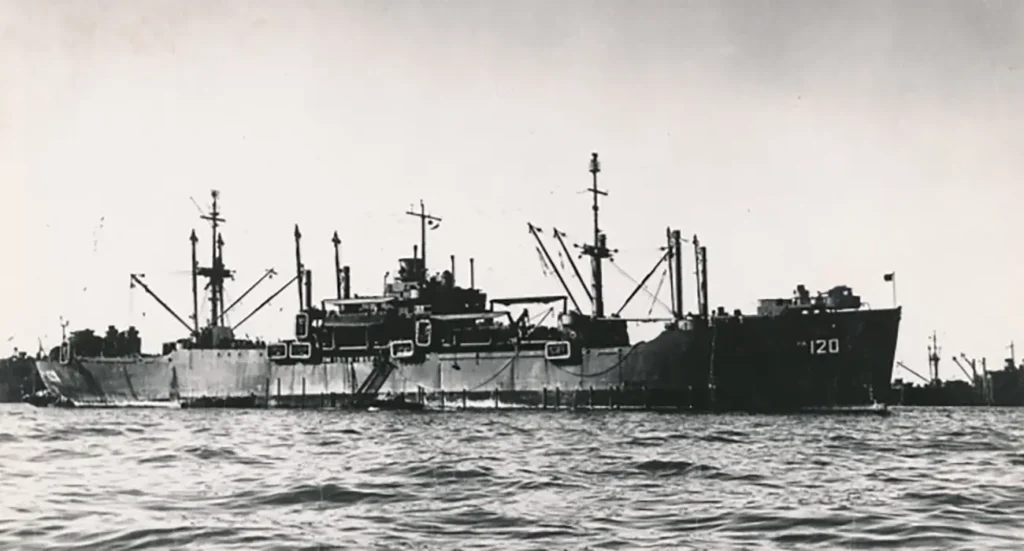
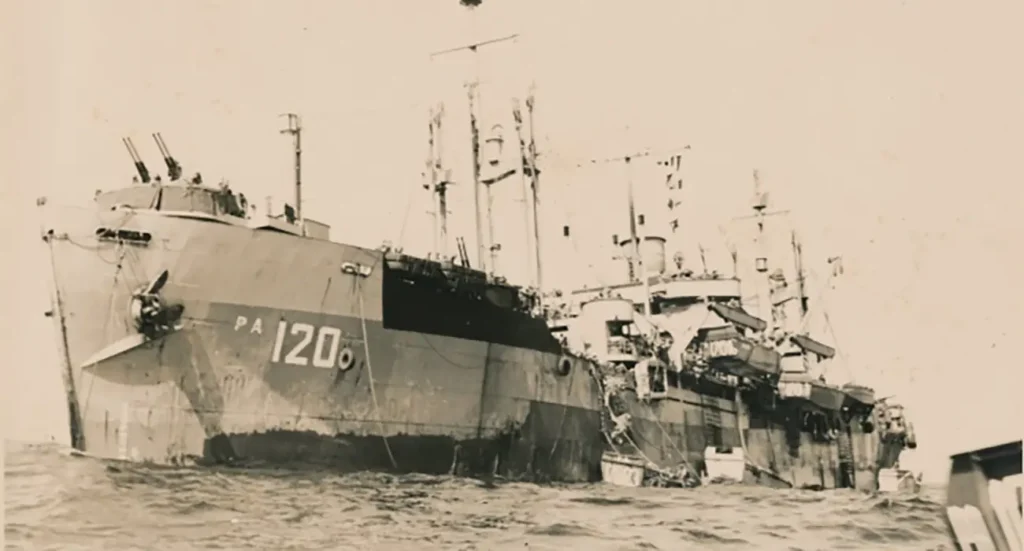
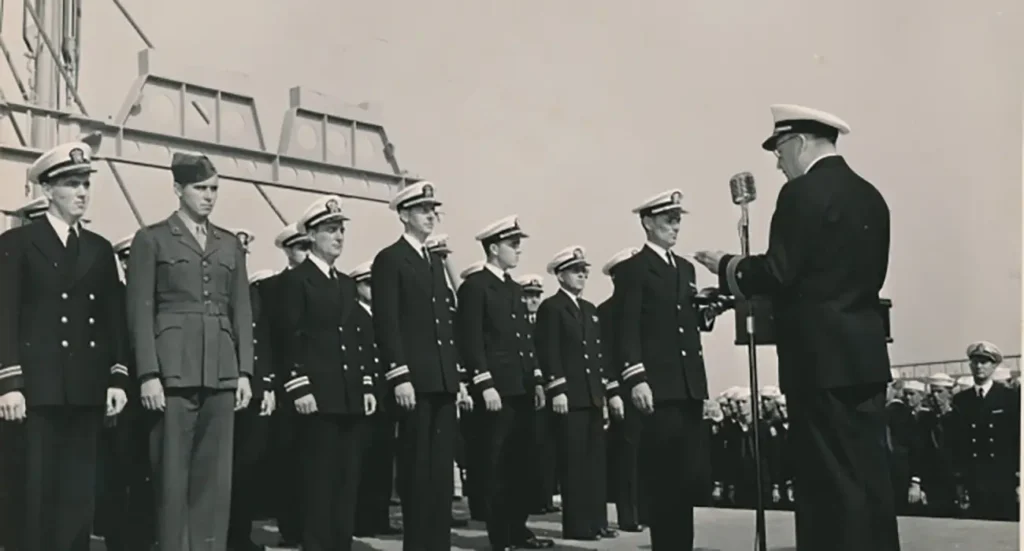
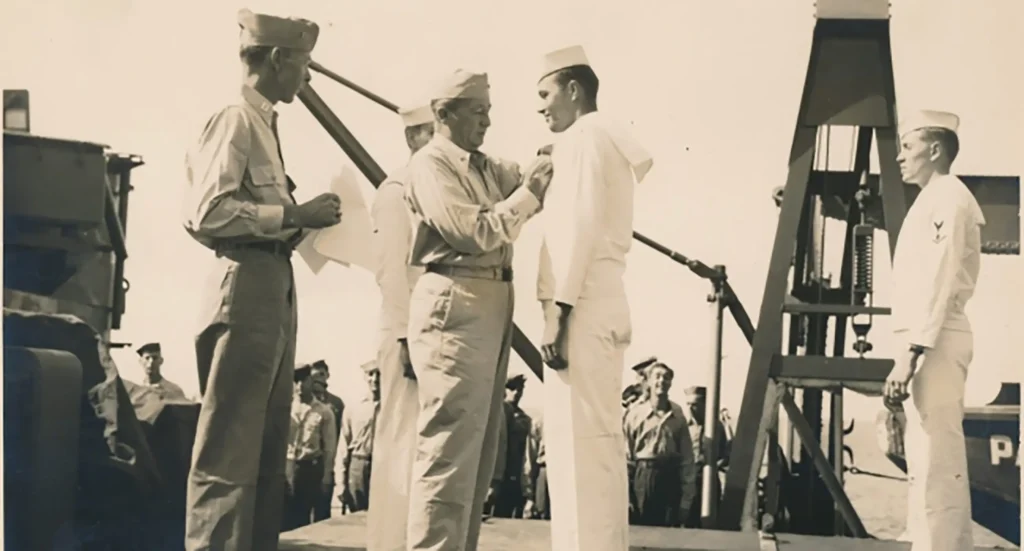

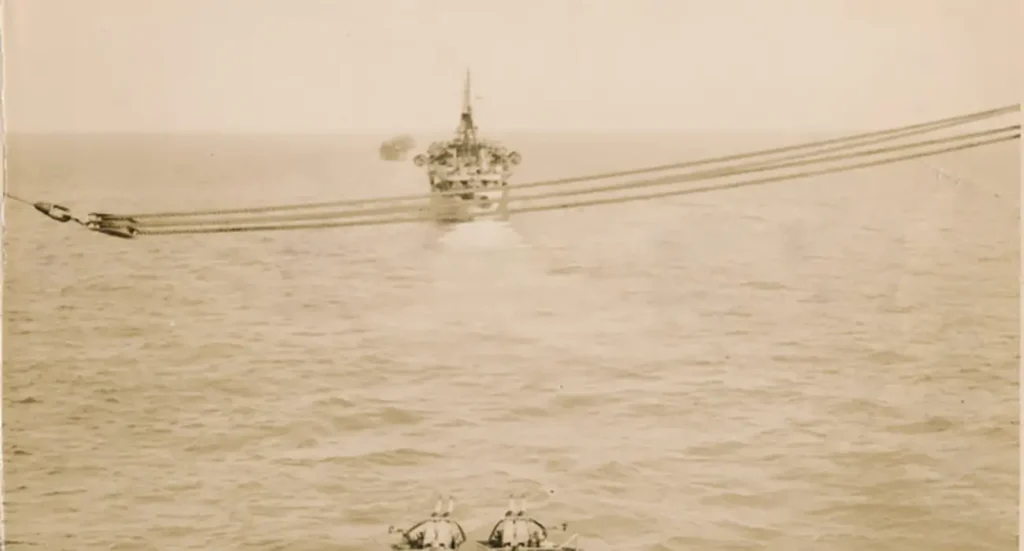
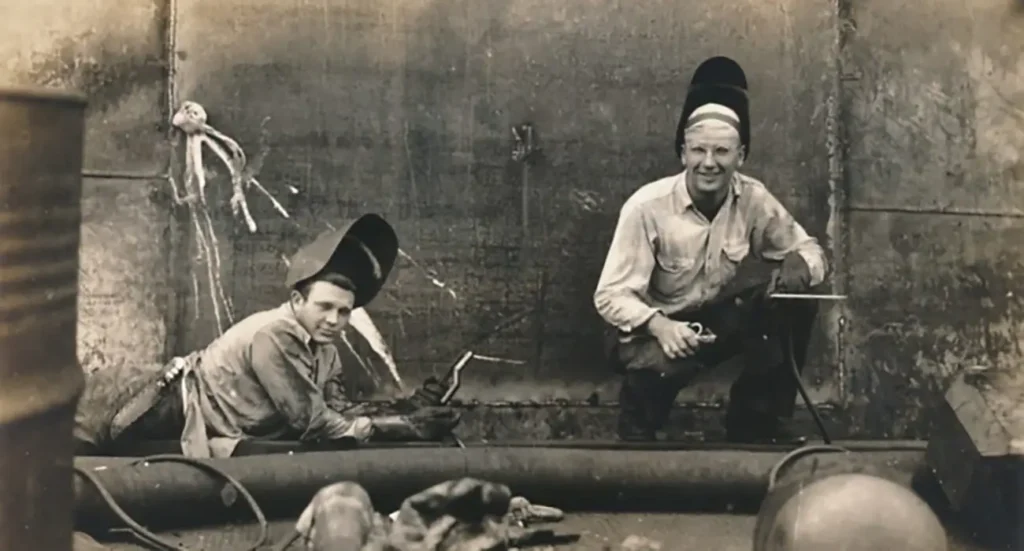
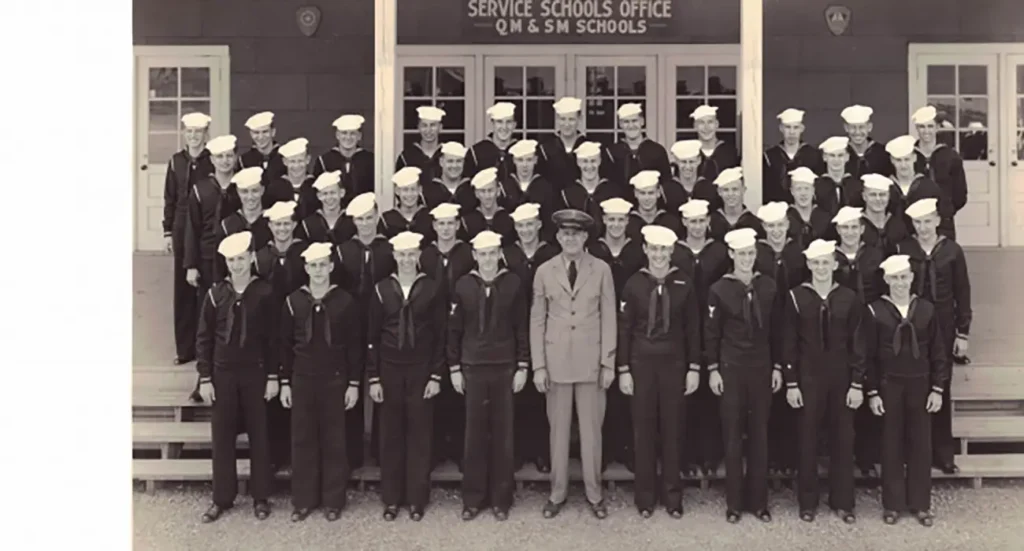
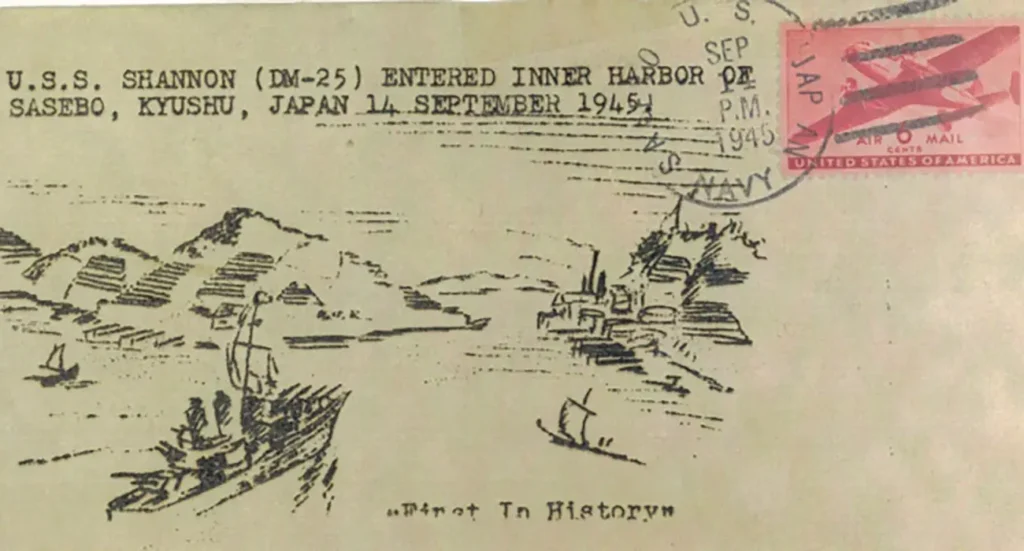

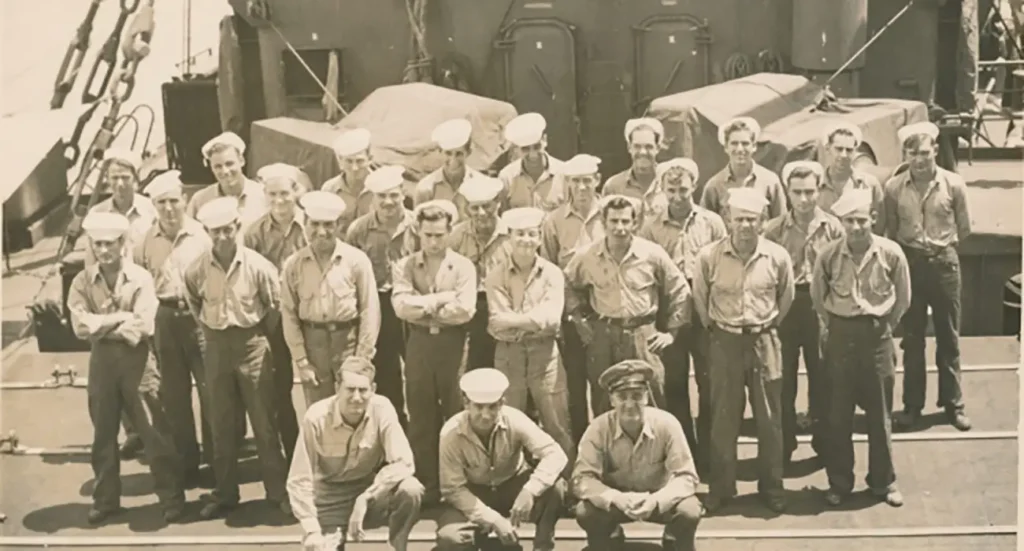
Dario Antonucci (Army) Audio | Transcript
Born in 1924, St. Marco Argentano, in the province of Cosenza in the Calabria region of southern Italy; Family of farmers; Father Angelo was a WWI veteran; Father and mother’s marriage arranged by family; Father came to America in 1923, worked and became citizen; returned to Italy, 1929; Mother passed away 1935; Father returns to work in U.S.; Life under Mussolini; Father returns to Italy and moves children to U.S. in 1937; Attended School #3 (later became Steele School) and Baldwin High School in NY; Enlisted in the Army Air Corps, November, 1942 after graduation; Processed at Camp Upton; Basic training, Miami Beach, FL; Radio Operator training, Sioux Falls, SD; Radio mechanic training, Traux Field, Madison, WI; P-39 and P-38 training in CA; Special training in air control/direction finder, and homing; Assigned to 51st Fighter Control Squadron, 10th Air Force; Departed for China-Burma-India (CBI) Theater of Operations, April, 1944; Spent 16 months in jungles of Burma; No fresh food, snakes, evidence of Japanese atrocities; Worked closely with Army Corps of Engineers; Flew “The Hump” as a radio operator; Many aircraft lost in January, 1945 due to bad weather; Last unit to leave Burma in December, 1945; S.S. Callan return to Seattle, WA; Discharged Feb. 9, 1946 at Fort Dix, NY; Enrolled at night school at Brooklyn Polytechnic Institute, graduated in 1959 with Masters in Electrical Engineering; Married in 1951; Worked in the electrical and microwave research and development field, Sylvania Research Labs, 1952-1960;
Artie Akers (Navy) Video | Transcript
Artie Akers was born in Jenkins, Kentucky on March 15, 1920. He enlisted in the Navy and worked as a radio man. He served in Pearl Harbor in 1939 and eventually served at Manilla, Philippines. It was there that Akers learned of the Japanese attack on Pearl Harbor. Akers worked with submarines during the war.
John Allen (Army) Audio 1 | Audio 2 | Audio 3 | Transcript 1 | Transcript 2 | Transcript 3
John Allen joined the army on May 15, 1941. After finishing officer candidate school, Akins was assigned to a truck regiment that performed tactical transportation for the infantry school. During his service, Allen traveled throughout British-controlled India where Allen trekked through the jungle with Indigenous porters and mules. He traveled through Calcutta and participated in the Burma Campaign, a joint-allied force between the British and the Chinese with support from the United States.
William B. Allen (Marines) Audio | Transcript
Willam B. Allen was part of the 23rd Regiment of the 4th Marine Division, Regimental Weapons Company which was an anti-tank outfit that served in the Central Pacific. Allen fought at the Battle of Tinian in the Mariana Islands from 24 July until 1 August 1944.
Foster D. Arnett (Army) Audio | Transcript
Born in Knoxville, TN on November 28, 1920; father a traveling salesman; discusses impact of the Great Depression; TVA; member of the Methodist Church; Studied History and Political Science at the University of Tennessee in 1939-42; ROTC at University of Tennessee; Commissioned as a Second Lieutenant, 1942; trained at Camp Wheeler, Fort Hamilton; Camp Upton; Paratrooper in World War II; 511th Parachute Infantry Regiment; Wounded in the Philippines; Served in New Guinea; “Pathfinder” at the Leyte Gulf Campaign; post-war lawyer; University of Virginia School of Law, 1948; Silver Star.
William F. Baggerman (Army Air Corp) Audio | Transcript
William F. Baggerman was with the 20th Air Force stationed in Guam in 1944. Baggerman’s interview details the US bombardment of Japan near the end of the war.
Lawrence W. Barker (Marines) Audio | Transcript
Lawrence W. Barker joined the Marines in January 1942. Baker’s job included mapping, relief mapping, and reproduction of maps in the Pacific. Baker supported the Marines at Tinian, Saipan, and Okinawa.
Adolph Barnaby (Army) Audio | Transcript
Adolph Barnaby joined the United States Army in 1932 and retired in 1962. Barnaby was part of the Panama Pacific General Depot, a quartermaster outfit. Barnaby served in many places during his service: North Africa, China, Burma, India, Theta, and Japan. Barnaby’s account details his time abroad, his work, and the desegregation of the US military.
Edward F. Barniskis (Army) Audio | Transcript
Edward F. Barniskis joined the army on May 8, 1940. He was sent to the Philippines and joined the 59th Coast Artillery, an anti-aircraft unit. His account details his time in the service and how they repelled the Japanese fighters throughout the Pacific.
Gordon R. Beem (Navy) Audio | Transcript
Born February 1, 1927 in Niles, Ohio; Father a veteran of the 130th Ohio Engineers in World War I; Describes WPA in Maine; Description of naval scene in Portland, Maine in World War II; enlisted in the Navy on Dec. 6, 1944; Asiatic-Pacific Campaign; Served on the U.S.S. Athene; GI Bill; Bowdoin College; Participant in the Korean War as Air Force Sergeant; 4th Interceptor Wing; Retired major of the U.S. Air Force; Stationed in Wieshaden, Germany in 1950s-60s; Returned to Loring Air Force Base, Maine.
Sloan Bomar (Navy Aviation) Audio | Transcripts
Sloan Bomar joined the Navy in 1942. Bomar worked as a radio man in the Navy’s PB4Y1 throughout the Pacific. Bomar’s account details the US involvement in the Solomon Islands campaign, Guadalcanal, and dog fights with Japanese aircraft.
G. Gordon Bonnyman (Army) Audio | Transcript
Born Fall 1919 in Knoxville, Tennessee; father worked for Campbell Coal Mining Company; Member of the Catholic Church; Early life in Knoxville; Attended school at French Boarding School in 1930s; attended Princeton in 1941; studied engineering; Battery Officer School at Fort Sill, Oklahoma; 97th Field Artillery Battalion; 4th Field Artillery Division; trained at Fort Bragg, NC; battery commander with Merrill’s Marauders; contracted malaria; later 112th Infantry Division; Wounded at Michenau; contracted dysentery; wounded again in 1944; traveled through Calcutta to U.S.; taught mule packing at Fort Riley, KS.
Charles Bray (I) (Navy) Audio | Transcript
Born in Hitchita, Oklahoma, 1921; father a farmer; life on the farm in Hitchita; activities with Civilian Conservation Corps; discussion of Works Progress Administration and other New Deal programs; visit to Chattanooga, Tennessee; February 1942 takes civil service position in Washington, D.C.; work in Veterans’ Administration; joins Navy, June 1942; assigned as a clerk to the Naval Department; discussion of Naval war room and impressions of General Staff; volunteers for active service; boot camp, Bainbridge, Maryland Navigation School, Samson, NY; assignment to destroyer USS Shannon, September 1944; travel to Pacific Theater; life on board ship; participation in the invasion of Iwo Jima and Okinawa; kamikaze attacks; fire support during invasions; mine sweeping; early post war Japan, visits to Sasebo and Nagasaki; return voyage to the United States; transfer to the Office of Naval Intelligence; discussion of the origins of the Central Intelligence Agency.
Charles Bray (II) (Navy) Audio | Transcript
Central Intelligence Agency, 1948; cover identities of agents; CIA culture and off duty activities; composition of early CIA personnel; influence of former FBI personnel on CIA; J. Edgar Hoover and FBI professional culture; communications intelligence from Eastern Bloc and code breaking; Germany, 1954; interception and translation of East German radio signals; tunnel into East Berlin; assignment to Taiwan and interception of Chinese radio signals; financing of operatives; reassignment to Miami, Florida, 1965; discussion of CIA operations against Cuba prior to his arrival in Miami; returns to CIA headquarters 1968; Vietnam, 1970-1972; support of South Vietnamese expatriates after 1975; changes within CIA post-Vietnam.
Carl V. Bretz (Army) Audio | Transcript
Growing up near Harrisburg, Pennsylvania during the Depression; Turned 18 and inducted into the Army in 1944; Fort Belvoir, Virginia for Basic Training; Typist Training at Camp Reynolds, Pennsylvania; stationed as a typist at Camp Rucker, Alabama and Camp Shelby in Mississippi until start of 1945; Sent to Hawaii in 1945 and was there when Atomic Bombs were dropped on Japan; Deployed to Nagasaki, Japan during post-war occupation and survey of Atomic Bomb aftermath; G.I. Bill for undergraduate and seminary school at Albright College in Reading, Pennsylvania; Graduate School for Psychology Religion at Boston University, Massachusetts; career working in mental health institutions in New Hampshire, Iowa, Massachusetts, and Alabama; living in Alabama under Governor George Wallace and during the Civil Rights movement; retirement to Oak Ridge, Tennessee.
W. E. Brewer (Army) Audio | Transcript
W. E. Brewer was drafted into the Army as a rifleman in July 1943. After training in Australia, Brewer was sent to New Guinea as part of the 41st Infantry. Brewer participated in the Battle of Biak Island between May 27 to August 17, 1944. His eyewitness account details the catastrophic events of the battle through the jungle against the Japanese.
Fred V. Brown (Army) Audio | Transcript
Fred V. Brown was part of the University of Tennessee’s ROTC program in the 1930s. When war broke out in December 1941, Brown was sent to Columbia, South Carolina where he helped organize various United States Army exercises held around southern North Carolina and northern South Carolina in 1941, known as the Carolina Maneuvers. Brown organized visiting trips of US generals and Winston Churchill, to whom he opened the door. The rest of the account details Brown’s service in the Pacific, including his experiences in the Battle of Buna–Gona between November 6, 1942, and January 22, 1943.
Lewis E. Brown (Army) Audio | Transcript
Lewis E. Brown enlisted in the Army Air Corps in 1940 when he was sixteen. Through a turn of events, Brown became a paratrooper for the 501st Parachute Battalion which dropped in New Guinea in 1944. Brown details his experiences in the Battle of Hollandia against the Japanese.
William I. Butler (Air Force) Audio | Transcript
Pre-war life in Martin, TN; Weakley County; farming; University of Tennessee Agricultural College, 1938 to mid-1941; drafted and sent to Ft. Oglethorpe; Savannah Air Base, ordnance of the 27th Bomb Group; Departed Savannah for the Philippines, October, 1941; Arrived Philippines 18 days prior to Japanese attack; Surrender of Bataan; taken prisoner and begins Bataan Death March; Held at Cabanatuan Prison Camp; also imprisoned for several months in Bililibid prison; Liberation on September 4th, 1945; Return home to Martin, TN; Graduated University of Tennessee, 1947; Worked for Agricultural Extension Service in Benton County, TN; 20 years with Pet Milk Company; Agricultural Extension Service, 1968, Hardin County, TN; Retired 1985.
Bill Bryan (Navy Aviation) Audio | Transcripts
Bill Bryan joined the Navy in May 1941 at the age of twenty-seven. He went to flight school in Atlanta, Georgia then transferred to Pensacola in December 1941. Bryan’s role was to fly routes throughout the South Pacific, from Hawaii to Midway or Guam. Part of his duty was transporting Japanese prisoners of war, those who were injured, and casualties.
Charlie Burchett (Marines) Audio 1 | Audio 2 | Audio 3 | Transcript 1 | Transcript 2 | Transcript 3
Charlie Burchett joined the Marines in 1942. He served in a battalion of combat engineers throughout the southern Pacific. Burchett’s account details his service, the conditions he lived in, and the fight against the Japanese.
Arthur D. Byrne (Army Aviation) Video | Transcript
Arthur D. Byrne was an Air Combat Intelligence Office ordered overseas in July 1944. Byrne served various places across the Pacific, including the Philippines and New Guinea. Throughout his interview, Byrne states that he did not see combat and only flew on two combat missions before the war’s end. Byrne was part of the occupying force in Japan after the war.
James A. Caire (Army) Video | Transcript
James A. Caire was a prisoner of war of the Japanese in World War II. Caire joined the service in May 1939 and was part of the 27th and 3rd Bomb Group in the Pacific. In April 1942, Caire was part of the forced military march of 76,000 prisoners of war from Mariveles to San Fernando, Philippines. From this brutal march, only 54,000 soldiers survived.
William Vane Campbell (Navy) HVHS Fallen Warriors Military Memoriam
Seaman Second Class William Vane Campbell was born in Elizabethton, Tennessee, on June 16, 1921. Campbell enlisted during his sophomore year at Happy Valley High School. He was assigned to the USS Oklahoma (BB-37) at Pearl Harbor. On December 7, 1941, the Japanese launched a surprise attack on Pearl Harbor, killing around 2,000 people- Campbell unfortunately included. He was awarded a Purple Heart and is memorialized at the Courts of the Missing Punch Bowl in Honolulu. Campbell’s remains were identified and returned home in 2018. He is laid to rest at the Happy Valley Memorial Park.
Rev. Melvin Carr (Navy) Audio | Transcript
Born in Sugarlands, Tennessee; father a World War I veteran in Meuse-Argonne Campaign; worked as a CCC medic at Camp Sugarlands in summer 1942; enlisted in U.S. Navy January 7, 1943; trained in San Diego; sent to Aleutians in May 1943; served aboard the U.S.S. Pennsylvania battleship; served in Australia; served at Leyte Gulf; Luzon; Surigao Sea Straight Battle; ship torpedoed in August 1945; Postwar; worked at Oak Ridge, TN as a security guard; Pastor of Baptist Church for 47 years.
Clifton B Cates (Marines) Documents
Clifton B Cates was born August 31st 1893 in Tiptonville, TN to Mr. Willis Cates and Mrs. Martha Darnell Bledose. Clifton attended University of Tennessee, Knoxville and graduated with a Bachelor of Law in 1916. When a United States Marine Corps recruiter came to campus to promote commission to college graduates Clifton Cates decided to join. Without knowing what the Marine Corps was he was sent to Port Royal, South Carolina and went active duty on June 13th of 1917. Clifton Cates played a pivotal role in the Battle of Belleau Wood and Battle of Soissons. When he returned to the States he went to Washington DC where he served as an aide to the Marine Corps Commandment and as a military aide to president Woodrow Wilson. In 1929 Cates was deployed to Shanghai where he rejoined the 4th Marines for three years. During World War II, he led his command through Marianas Operation (1944), Tinian campaign (1944), and the seizure of Iwo Jima (1945). When he returned to the states in 1945 he became President of the Marine Corps Equipment Board at Quantico. In 1948 Clifton was sworn in as the 19th Commandant of the Marine Corps and promoted to rank of General. Clifton earned more than 20 medals and awards throughout his career including the Navy Cross, the Distinguished Service Medal with oak leaf cluster, Legion of Merit with Combat “V” and many more. Clifton retired on June 30th, 1954 with his wife in Washington DC, he was eventually promoted on the retired list to the rank of full General.
Ralph Chambers (Navy) Transcript
Ralph Chambers (1926-2012) served in the Navy in WWII (Pacific) on the LST 743 and later saw action in Korea. He also served in the Coast Guard. He was born and raised in the Rock House community, Scott County TN, and descended from Thomas Chambers, one of the first to cross the Cumberland Gap into Tennessee.
Charles Wayne Clamon (Marines) HVHS Fallen Warriors Military Memoriam
Private Charles Wayne Clamon was born on August 15, 1925, in Watauga, Tennessee. Clamon graduated from Happy Valley High School and worked as a newspaper carrier salesman when he enlisted in the Marine Corps. He served in the 2nd Marine Division of the 8th Marines in the Pacific Theatre. It was on August 1, 1944, while taking Hell’s Half Acre on Tinian Island, that he was killed in action. He was only 18 years old. Clamon was awarded a Purple Heart posthumously and is currently laid to rest at the Happy Valley Memorial Park in Elizabethton, Tennessee.
Harley Cooper (Army Airforce) Video 1 | Video 2 | Transcript 1 | Transcript 2
Harley Cooper was part of the 92nd Army Air Force after being drafted in 1943. He also served in the 375th Air Force Group, 5th Squadron. Cooper fought in the New Guinea campaign and throughout the South Pacific.
Clarence J. Daniels (Army) Video | Transcript 1 | Transcript 2
Clarence J. Daniels enlisted in the Army in January 1941. Daniels worked in a radar unit in the Philippines. Daniels’ account details the army’s war efforts in the Pacific and the distinct challenges that particular front faced.
Jacob DeShazer (Army Aviation) Video | Transcript
Jacob DeShazer took part in the Doolittle Raid, an air raid on April 18, 1942, by the United States on the Japanese capital Tokyo during World War II. DeShazer was the bombardier of the last plane to be launched on 18 April.
David Dale Dickey (Army) Audio | Transcript
Born in Williamston, NC, 1927; father a minister and WW I veteran; also grew up in Morristown, TN; life on the home front, warÂ’s impact on returning veterans; changes in American society after 1945, segregation; Merchant Marine Cadet School, Pass Christian, MS, 1945; student, University of Tennessee-Knoxville, 1946; enlisted Army 1946 Fort Oglethorpe, GA; Infantry training, Fort McClellan, AL; Paratrooper training, Fort Benning, GA; training injuries and reassignment; 1946-1947 occupation duty in the Philippines; encounters with Filipinos; propaganda images of the Japanese and interactions with POWs; return to University of Tennessee-Knoxville, graduation 1950; newspaper reporter in Knoxville 1950s-1970s; life in city; Chamber of Commerce; Executive Director Industrial Development Board; freelance writer 1970s-1990s.
Rev. Buck Donaldson (Navy) Audio | Transcript
Born August 23, 1925 in New Verda, Louisiana; father was a country doctor; enlisted in the U.S. Navy in 1942 in Shreveport; trained in San Diego; attends radio school in Los Angeles; active in the Zoot Suit War; served in the Tahiti Islands (Tasmania); Karachi India; Marshall Islands; Admiralty Islands; Palau Islands; Saipan; engaged in the Invasion of Peleliu; served aboard the U.S.S. Cape Canso and U.S.S. Cyrus Adler; joined the Fleet Post Office in the navy; traveled all over the world with Fleet Post Office; served on the U.S.S. Suison; postwar; missionary, pastor; Vanderbilt Student Director; served in Africa with family.
George Eddlemon (Army) Video 1 | Video 2 | Transcript 1 | Transcript 2
George Eddlemon served in army stationed in the Philippines during the bombing of Pearl Harbor in 1941. Eddlemon was part of the Safety Coast Artillery, Battery A as a BEC control operator. Eddlemon was a Japanese prisoner-of-war after the Japanese attacked Corregidor in May, 1942.
H. Haley Ector (Army Air Corps Video 1 | Video 2 | Transcript 1 | Transcript 2
H. Haley Ector was born on August 25, 1920, in Alabama. He attended Georgia Tech before the World War II and enlisted in the Army Air Corps. Ector flew several craft throughout the South Pacific. Ector’s account details his wartime travels through Hawaii, Guam, Australia, Fiji, and New Caledonia.
Louis “Kayo” Erwin (Navy) Audio | Transcript
Born 1925 in Rhea County, Tennessee; childhood on family farm in Meigs County, TN; teenage years going to school and working in Chattanooga, TN; enlisted in Navy December 26, 1942 at the age of 17; assigned to USS Indianapolis after boot camp in 1943; worked in multiple positions on crew operating five-inch guns; record of action at Saipan, Tinian, Tarawa, and Iwo Jima; experience with kamikaze impact at Okinawa; daily life on board the Indianapolis; torpedoed by Japanese submarine on route to Leyte after delivery of atomic bomb components to Guam on July 13th, 1945; survival in water before rescue by the Cecil J. Doyle and taken to Guam for recovery; discharged and returned home to Chattanooga, TN in 1946; life after war working for Ellis Distributing Company; post-war legacy of the Indianapolis and the trial of Captain Charles McVay.
William H. Ettinger (Army Photography) Video 1 | Video 2 | Transcript 1 | Transcript 2
William H. Ettinger was drafted into the Army on August 8, 1941. Ettinger was sent to photography school in Monmouth, New Jersey. Later, Ettinger was sent to the Pacific theater, visiting such places as Australia and the Philippines.
Tom Evans (Army Air Corps) Video | Transcript
Tom Evans was born on December 15, 1922. After finishing his first year at the University of Tennessee, Pearl Harbor was attacked which pushed Evans to want to join the service. Evans enlisted in the Army Air Corps and started basic training in February 1943. After training, Evan flew into Calcutta, India in the Sam Valley. Evan was part of the 12 Bomb Group in the 10th Air Force. Evans’s records detail his experiences around Southeast Asia.
Clifford Fitzsimmons (Army Air Force) Video 1 | Video 2 | Transcript 1 | Transcript 2 | Transcript 3
Clifford Fitzsimmons enlisted in the Air Force on April 4, 1965. He trained as a radio operator. After training, Fitzsimmons was stationed in Cam Ranh Bay and then moved north to the Da Nag area. Fitzsimmons’ unit was the 2nd Black Tiger Unit, a CIA-driven unit that worked to establish safe villages for down pilots operating over the north.
Marvin Flitcroft (Army) Video 1 | Video 2 | Transcript 1 | Transcript 2
Marvin Flitcroft joined the National Guard in 1938 and was assigned to the 46th Infantry Division during World War II. This Division was an anti-aircraft unit stationed in Australia, New Zealand, and New Guinea.
Winston Folk (Navy) Video | Transcript 1 | Transcript 2
Winston Folk graduated from the Naval Academy in 1923. After training in meteorology from CalTech, Folk was set to retire from the Navy. However, after the bombing of Pearl Harbor, Folk was invigorated to help the war effort. Folk was assigned to the USS Birmingham and was sent to Sicily on July 10, 1943. Later, the ship fought throughout the Pacific. Folk’s account details naval combat in the Mediterranean, building of ships, repairs, and conflicts in the Pacific.
Jake Foote (Army Air Force) Audio | Transcript
Jake Foote was born into a flying family: his father was a barnstormer and his mother was a wing walker who thrilled crowds as she performed acrobatics on bi-plane wings. Foote flew throughout Asia during World War II, landing in places such as Burma and China. Foote died while flying for Slick Airlines during a thunderstorm sometime between 1947 and 1948.
Cecil L. Forniash (Army) Interview 1, Audio 1 | Interview 1, Audio 2 | Interview 2, Audio 1 | Interview 2, Audio 2 | Transcript 1 | Transcript 2 | Transcript 3 | Transcript 4
Cecil L. Forinash joined the service at the University of Iowa’s ROTC program in 1935. After the war broke out, Forniash was assigned to the Philippines, arriving in the summer of 1940. He was assigned to the 45th Infantry, the Philippines Scouts, a heavy weapons company. Forinash’s account details various operations throughout the Pacific.
Robert C. Fraim (Navy) Audio | Transcript
Robert C. Fraim enlisted in the U.S. Navy in March 1943. After training as a radioman, Fraim served aboard PT Boats throughout the Pacific. Fraim’s account details PT boats and their use in the Pacific theater.
Grady Gallant (Marines) Audio | Transcript
Born in June 14, 1920 in Gadsen, AL; early life in Alabama and Florida; enlisted with the United States Marine Corps on September 3, 1941; basic training; served with the Fleet Marine Force from 1941 until 1945; describes assault on Iwo Jima; postwar; journalism school at Emory University; career in journalism; work as author; discussion of books The Friendly Dead and On Valor’s Side.
Robert H. Gentry (Navy) Audio | Transcript
Robert H. Gentry was drafted into the Navy in May 1944 and shipped to the Kwajalein Atoll, Marshall Islands. There, Gentry took care of the radio and radar systems on various Naval aircraft.
Albert Gill (Air Force) Audio | Transcript
Born 1921, Fort Smith, AK; childhood in Charleston and Columbia, South Carolina; Great Depression; enlistment in the Aviation Cadet Program, October 1942; basic training Fort Jackson, Aviation Cadet Program, University of Tennessee Knoxville and Maxwell Field; pilot training, Jackson, TN and Fort Meyers, FL; training with B-24s; 307th Bomb Group, 13th Airforce; deployment to Noemfoor, and Morotai, New Guinea; camps life; bombing raids on Balikpapan and the Philippines; leave to Australia and encounters with Australians; Battle of Leyte Gulf; Japanese atrocities on Palawan, VJ day; return to the United States; Post War life; activities with veterans’ groups.
Paul E. Gomer (Navy) Audio | Transcript
Paul E. Gomer enlisted in the Navy on January 1, 1942. Gomer arrived in Pear Harbor, Hawaii, on February 15, 1942. Gomer was assigned to a crew that cleaned up the ships that were sunk in Pearl Harbor. Later, Gomer was apart of the Battle of the Aleutians. Once completed, Gomer’s vessel protected convoy prior to the invasion of Normandy.
Richard L. Graham (Army) Audio | Transcript
Born in Hazel Green, AL, 1923; father a World War I veteran; studied Agriculture Administration at Auburn in 1942; ROTC; enlisted in Army, 1943; trained at Fort Bragg and Fort Leonard Wood; 475th Infantry Regiment, Company G of “Mars Task Force”; route from Newport News, Cape Town, Bombay, Burma; arrived in Burma in June 1944; march through Burma toward the Burma Road; promoted to Sergeant; march from August 1944- Spring 1945; encountered combat in Myitkinya; travels home through China, India; Egypt; returned to Huntsville, AL; married with three daughters; real estate agent.
Clarence Higgins (Navy, USS St. Louis) Documents
Clarence Higgins was from Erwin, Tennessee. He enlisted in the US Navy in 1940 and was stationed on the USS St. Louis (CL-49) at Pearl Harbor. He was at Pearl Harbor during the attack by the Japanese on December 7th, 1941 with the USS St. Louis narrowly escaping destruction. He was later promoted to Electrician’s Mate, 1st Class and served on three submarines in the Pacific during World War II. After the war, he was a school teacher in Unicoi County, Tennessee before graduating from the University of Tennessee Law School and becoming an attorney.
Ray H. Higgins (Navy) Audio | Transcript
Born June 18, 1921 in Woodbury, TN; grandfather a Union veteran of the Civil War; trained as a radio operator; Radio school in Boston, 1942-43; enlisted as a radio operator for the U.S. Navy; trained on the U.S. towboat, Vicksburg; training on the Mississippi River, Chicago to Mississippi; sent to Port Hueneme, California in 1944; worked on U.S.S. Christopher S. Flanagan and U.S.S. William H. Taggett; Ensign; sent from Hawaii to Marianas Islands; Yokohoma Japan; experience at Eniwetok, Phillipines; Mindanao; Manila; Luzon; Postwar; Southern Fire and Casualty Company in Knoxville; owned own business for twenty years.
Walter M. Higgs (Army Air Corps) Audio | Transcript 1 | Transcript 2 | Transcript 3
Walter M. Higgs enlisted in the Army Air Corps on October 8, 1940. Higgs was a part of the 27th Bombardment Group Light, 17th Squadron. He flew the Lockheed B-18s in the Pacific. Higgs arrived in the Philippines twenty days before the bombing of Pearl Harbor. His account details the mobilization of those forces already in the Pacific and other events during the war.
Boyce Holleman (Navy) Audio | Transcript
Boyce Holleman enlisted in Navy Aviation in July 1942. This composite squadron worked with the naval aircraft carriers. The climax of Holleman’s service was when he was shot down during the invasion of Saipan on June 15, 1944.
E. L. “Jim” Horton (Army) Audio | Transcript
E. L. “Jim” Horton was called to active duty in November of 1940. Horton was assigned to the 57th Infantry, Philippine Scouts, appointed to work with the Philippine Army during the war. Horton’s account details the Filipino Army, their training, and their equipment.
Robert M. Howes (Navy) Audio | Transcript
Robert M. Howes enlisted in the Navy in April 1944 at the age of 32. He left behind his wife, two kids, and his job with the Tennessee Valley Authority to be assigned to the USS Dayton. By the time Howes arrived in the Pacific, the nuclear bombing of Hiroshima and Nagasaki had already occurred. Howes’ account details the USA’s arrival on the Japanese mainland and various events in Tokyo.
Joseph F. Marvin (Naval Air Corps) Audio | Transcript
Joseph F. Marvin was part of the Naval Air Corps patrolling the water around Astoria, Oregon. Marvin flew SBD Dauntless, a bomber that flew out to sea to challenge Russian shipping. Later, Marvin was sent to the Pacific, was aboard the USS Alabama, and participated in combat in the Philippines and Okinawa.
Charles Kelley (Army) Audio | Transcript
Charles Kelley was drafted into the Army on July 18, 1941. During training, Kelley learned how to set up landmines and eventually was sent to the Pacific theater of the war, landing in such places at Australia and New Guinea.
John E. Kesterson (Medical Corps) Audio | Transcript
Surgeon, Medical Corps; 114th Gen Hospital, UK; 84th Field Hospital, France; Served in the Philippines, Newton Baker Gen Hospital, Mayo Clinic.
Wallace Key (Navy) Audio | Transcript
Wallace Key joined the Navy on December 19, 1942. Initially, Key was part of a security force in San Diego before being shipped overseas to Guadalcanal and then eventually to the Mediterranean.
F. D. Kuhlman (Navy) Audio | Transcript
F. D. Kuhlman enlisted in the Navy on February 2, 1942. Kuhlman’s account details his training, his service in the Pacific, and his comradery with other sailors.
Paul H. Lankford (Army Air Corps) Audio | Transcript 1 | Transcript 2 | Transcript 3
Paul H. Lankford enlisted in the U.S. Army Air Corps on October 26, 1939. Lankford was a part of the 27th Bomb Unit, which worked on plane maintenance. After sailing to Hawaii, Lankford’s crew was sent to the Philippines, where they soon became prisoners of war after the Battle of Bataan. Lankford’s account details this experience and the cultural differences between America and the Japanese.
Luke Lea (Army Air Corps) Audio 1 | Audio 2 | Audio 3 | Transcript 1 | Transcript 2 | Transcript 3
Luke Lea was incited to join the war effort after the Japanese bombing of Pearl Harbor in 1941. Most of Lea’s experience was as an intelligence officer, working with figures such as General Curtis Emerson LeMay in the Pacific.
Gordon A. Mason (Navy) Audio | Transcript
Gordon A. Mason joined the Navy on December 5, 1939. Mason was a member of the Pearl Harbor Survivors Association. Mason worked on boilers aboard the USS California. Mason’s account details his experiences on December 7, 1941, including his initial thoughts, his work attempting to bail the ship, and the frantic nature of the attack itself.
William A. McClain (Navy) Audio | Transcript
William A. McClain enlisted in the Navy in 1943. He was assigned to the Pacific, sailing to the Philippines, Iwo Jima, Okinawa, and then up to the Yellow Sea, spending the rest of his service in China.
William Wesley McGill (Navy) Audio 1 | Audio 2 | Transcript 1 | Transcript 2
William Wesley McGill joined the Navy sometime before 1942 and fought in the Pacific. Stationed out of Tonga, McGill’s job was to refuel the Navy, including many ships, such as the USS Yorktown, USS Lexington, the USS Portland, USS Astoria, and the USS Vincennes.
Seaman Louis H. McKeehan (Navy) HVHS Fallen Warriors Military Memoriam
Seaman Second-Class Louis H. McKeehan was born on February 12, 1926, in Elizabethton, Tennessee. He was a graduate of Happy Valley High School. He served on the USS Hull (DD 350). McKeehan was lost at sea and pronounced dead shortly thereafter on December 18, 1944, after a severe typhoon capsized his carrier and two others. He was only 18 years old. McKeehan was awarded a Purple Heart and has two grave markers: one at the Manila American Cemetery, Fort Bonifacio, and one in Tennessee, McKeehan Cemetery in Elizabethton, Tennessee.
Robert Neyland (Army, China-Burma-India, UTK Football coach) Documents
From Greenville, Texas, Robert Neyland graduated from West Point in 1916 and served with the Army during World War I. He worked as a professor of Military Science and football coach for the University of Tennessee, starting in 1926. He was recalled into active service during World War II. He served as a district engineer in Norfolk, Virginia before being sent to the China-Burma-India Theater in 1944. He retired as a Brigadier General and worked for UTK Athletics until his death in 1962.
Charley T. Odom (Navy) Audio | Transcript
Pre-war life; Great Depression; work at Standard Oil Company; Pre-war Navy life, training, and experiences aboard the USS Stone, a World War I era submarine; left Navy 1940 and worked for the Merchant Marine; returned to Navy 1942; assigned to USS Billfish; life on board a submarine in combat conditions; Perth, Australia; Post-war; service on a Navy tanker ship during the Korean War; duty as an Instructor at naval schools in New London, Connecticut, and San Diego and Tiburon, California; Jimmy Carter as one of his naval students; retired from the Navy 1956 and taught at Fulton High School, Knoxville; received his undergraduate degree from the University of Tennessee, 1976; work in writing group in Knoxville and activities in veterans’ organizations.
P. Neal O’ Steen (Navy) Audio | Transcript
Prewar life in Bedford County, TN; Enlisted Jan. 1941; Philadelphia Naval Hospital until Dec. 7, 1941; Naval Recruitment Station, Philadelphia until June, 1943; Sole medical staffer aboard USS ATR-23, rescue tug, in eastern Pacific, 1943-1946, Pharmacist’s Mate, First Class; U.S. Navy Reserve 1947-1951; Korean War at Norfolk Naval Air Station 1950-1951, Chief Hospital Corpsman; Postwar; UT-Knoxville, Class of ’50, Journalism; Kingsport Times, Norfolk Virginian-Pilot; Director of Publications at UT-Knoxville, 1957-1985.
Thomas N. Parlon (Navy) Audio | Transcript
Childhood in Lafayette, Indiana; Prohibition; Great Depression; education at Perdue University; Navy 1941, training Great Lakes, Illinois; officer’s commission; U.S.S. William K. Vanderbilt; Fiji Islands, South Pacific; sinking of ship; assigned to U.S.S. Abercrombie; reassignment to U.S.S. Mormactern; escort of supply ships from Wellington, New Zealand to the South Pacific; life on board ship; post war civilian life.
Charles Seay (Air Force) Audio | Transcript
Childhood, Lebanon, TN; family history, experiences during the Great Depression; ROTC; enlistment as aviation cadet, 1941; training at Camp Tullahoma OK., Fort Oglethorpe, GA., and Visalia, CA.; training with B-25 bombers at Greenville, SC.; trained by veterans of the Doolittle Raid; assigned to 70th Squadron, 13th Airforce, Pacific Theater; Henderson Field, Guadalcanal; bombing raids against Japan; encounter with a Japanese prisoner; Rabaul; supply runs to Australia; night raids; Russell Islands, Bougainville; Port Moresby; impressions of Australian airforce, interactions with island inhabitants; relationship to crew; supersitions among crew; V-J Day; return to United States; G.I. Bill; university; post war career.
William Eugene Silvey (Navy) Photos | Documents
Silvey was born in Knoxville, TN in 1919. He was an offensive lineman for his high school football team. He worked as a salesclerk at a grocery store. Then, Silvey enlisted in the U.S. Navy in 1942 after the bombing of Pearl Harbor, even though he could not swim. He somehow passed the Navy swimming test even though he had never seen a pool before. He served on a submarine chaser (USS SC 980) and an auxiliary fleet tug (USS ATA 206) in waters around Hawaii, Guam, and Japan. He participated in towing and salvage operations, and he even survived a typhoon. Silvey was honorably discharged at the rank of Quartermaster, first class in 1945 with a Good Conduct Medal. After the war, Silvey started the first “self-service” grocery store in Knoxville. Prior to the war grocery store clerks would take the customer’s list and fill the order, bag it and bring it to the customer at the counter. He also purchased two school buses and outfitted them with shelves and generators and started “rolling store” routes in Knoxville. He hired veterans to drive the buses and manage the routes. He died in 1992.
Sam Smith (I) (Navajo Code Talker) Audio | Transcript
Navajo Nation family history and growing up on the Reservation in the Gallup, NM and Cornfields, AZ communities; Educated at Ganado Mission School, Fort Wingate Indian School, Albuquerque Indian School; At age 17, enlisted in U.S. Marine Corps, April 3, 1943; Departure and homecoming ceremonies on the Reservation; Basic Training at San Diego; Camp Pendleton and Code Talkers school; 4th Signal Company, HQ Battalion, 4th Marine Division in the Pacific.
Sam Smith (II) (Navajo Code Talker) Audio | Transcript
Navajo Code Talker and combat communications; Combat in the Marshall Islands, Saipan, Tinian, and Iwo Jima from January 1944 to March 1945; Post-war homecoming; Marries into Acoma tribe, builds first home; Various jobs—Santa Fe Railroad, Navajo water resources, heavy equipment foreman, Chief Ranger; Special Officer for FBI; Director of heavy equipment reconditioning center for Navajo Tribe; reunions; Windtalkers, the movie.
Lemuel Sparks (Navy Chaplain) Audio | Transcript
Born 1917, Newport, TN; childhood; impressions of Tennessee Valley Authority; Great Depression; tobacco farming; business school; Roanoke College, Salem, VA.; Lutheran Theological Southern Seminary, Columbia, SC.; school fraternities; enlistment as chaplain, 1942; Navy, training at Great Lakes Naval Center; promotion to lieutenant, junior grade; assignment to U.S.S. Sangamon; strafing attack, Philippines; duties as Chaplain; Sangamon hit by kamikaze at Okinawa, May 4, 1945; reassignment to U.S.S. Fall River; return to the United States; post war life.
Durward B. Swanson (Army Air Force) Audio | Transcript
Troup County, Georgia farming, largely cotton; moved to Dublin, Virginia when father got a job working as a superintendent doing dam construction during the Depression; Enlisted in Army Air Corps/Force in 1939; training at Fort Benning, Georgia; stationed at Wheeler and Hickam Fields in Hawaii; working as a motorcycle police during the Attack on Pearl Harbor, Dec. 7 1941; training in Maintenance and Bomber Crew at Chanute Field, Illinois; deployed to Pacific with 23rd Bomb Squadron, 5th Bombardment Group, 7th Air Force; Engaged a Japanese fleet while being transferred to Midway; hit a destroyer and aircraft carrier before having to ditch plane in the ocean; severely wounded and one of only three survivors; rehabilitation back at Kennedy General in Memphis, Tennessee; Post war music career involving stars like Hank Williams Sr. and Porter Wagoner; Goes into building dams and bridges as a superintendent like father; spent retirement between North Georgia and Maryville, Tennessee.
Bill White (Marines) Audio | Transcript
Born, 1924, Athens, TN; childhood; enlistment in Marines, 1941; training San Diego, volunteered for Special Airborne Infantry; training; deployment to a Raider battalion, Second Marine Division; Tulagi, Tanambogo and Gavutu; Guadalcanal; discussion of jungle fighting and Raider tactics; interactions with locals in New Zealand; tensions between American and Commonwealth troops; Tarawa; instructor, jungle warfare school, Parris Island; VJ Day, efforts to run a veteran candidate in McMinn County, TN; tensions between veterans and police; Battle of Athens, TN; hired as a deputy with the Athens Sherriff’s Department; Post Traumatic Stress Disorder and readjustment to civilian life.
Howard K. Williams (Navy) Audio | Transcript
Pre-war life in Blackstone, VA; National Youth Administration school at Manassas 1941; Received exemption and sent to shipbuilding apprentice school at Newport News, VA1941; Stayed on at Newport News as civilian shipbuilder; Exemption ended, 1943; Enlisted in U.S. Navy, March 1944; Basic training, Bainbridge, MD; Further training at Gulfport, MS; Motor Machinist Mate, LCVPs [Landing Craft, Vehicle, Personnel]; More training, Oceanside, CA; USS LaGrange APA 124, January, 1945; Okinawa and adjacent islands; Kamikazes; Stayed in Navy until May of 1946; Postwar in VA, FL- drafting, 30 years with Bethlehem Steel estimating and sales; Retired to TN.
World War II, Stateside
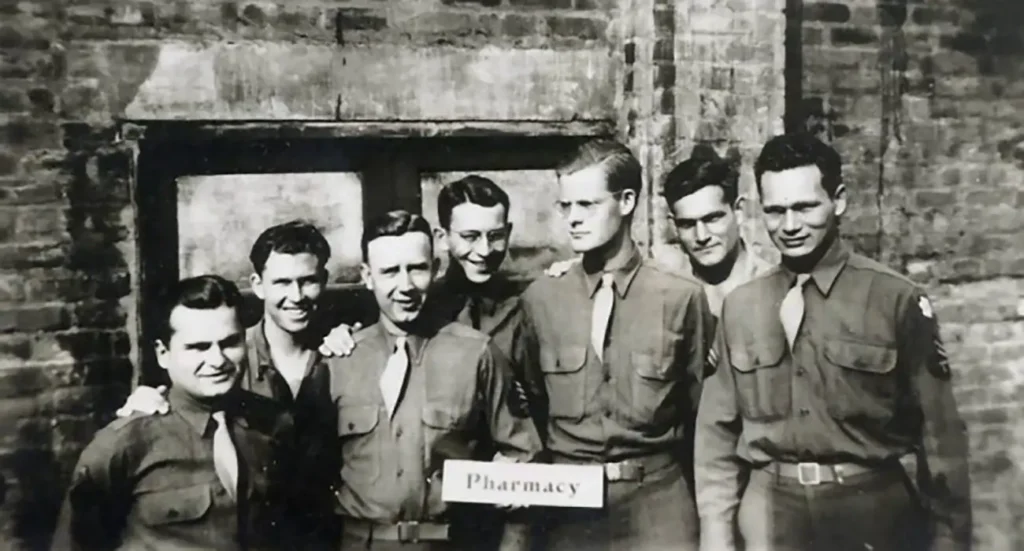

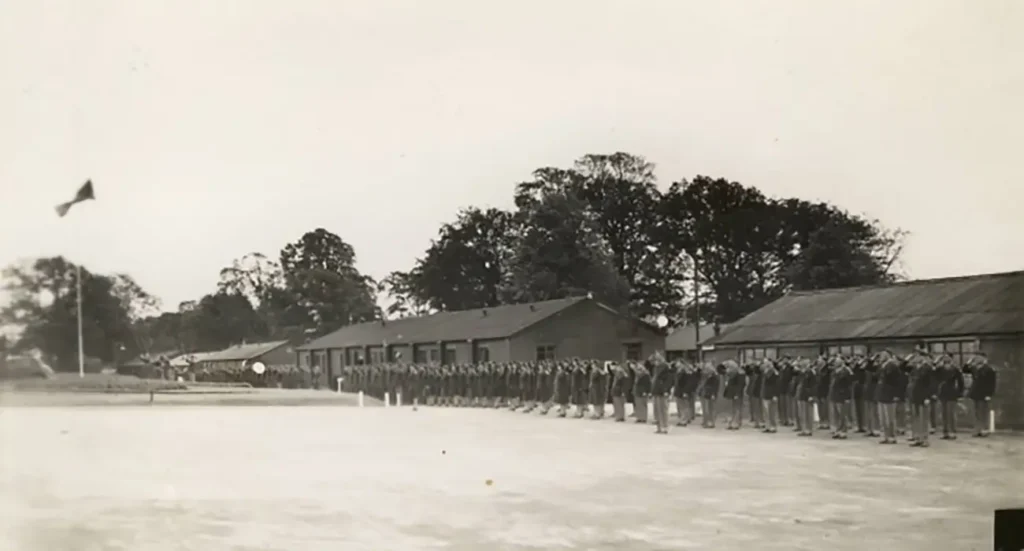
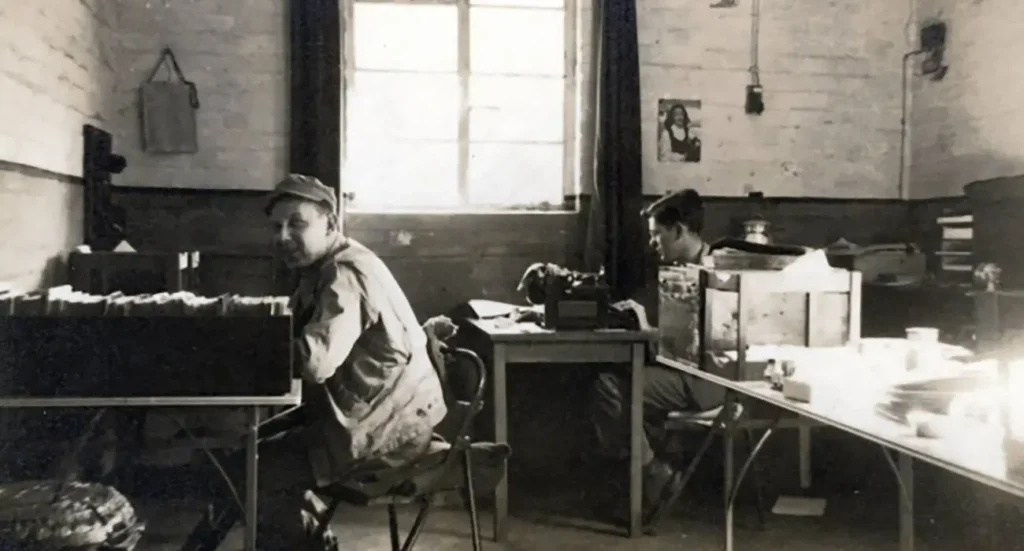

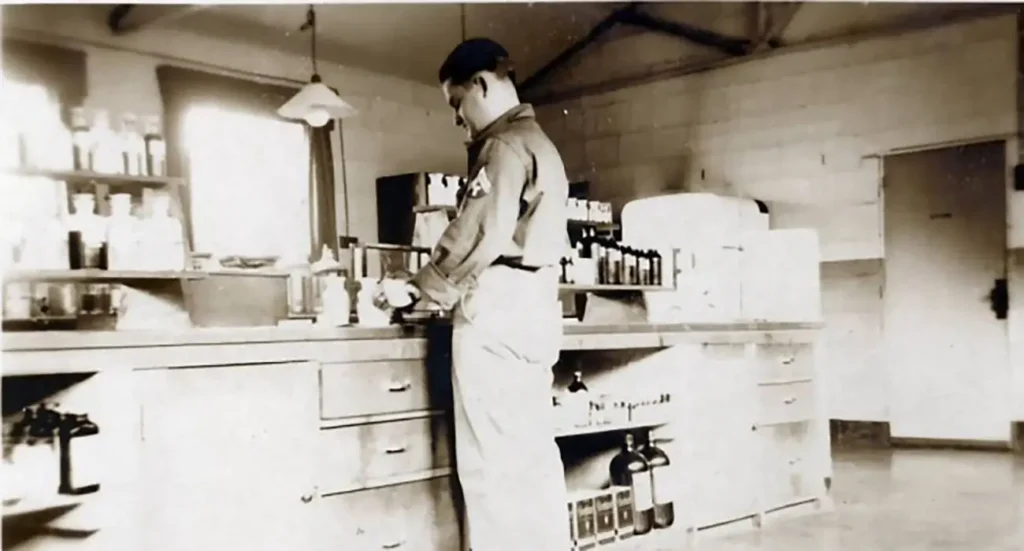
Richard Lowell Blanchard (WNOX Radio Station) Documents
From Palmer, Illinois, Blanchard moved to Knoxville, Tennessee in 1936 after attending the University of Illinois. He worked as an emcee for WNOX for two decades and throughout World War. Blanchard was never drafted, but served in local politics during the war while also continuing wartime broadcasts through the radio station. He also worked as a broadcaster for the UT Volunteer sports teams, the Knoxville Bears and Smokies baseball teams.
William F. Bowman (Marines) Audio | Transcript
William F. Bowman joined the Marines in 1943 and later became an aviation instructor. Bowman’s account details his training, his travels, and aviation production in the 1940s. William F. Bowman joined the Marines in 1943 and later became an aviation instructor. Bowman’s account details his training, his travels, and aviation production in the 1940s.
Harold Diftler (Navy) Audio | Transcript
Born December 14, 1927 in Knoxville, TN at Fort Sanders Hospital; father immigrated to U.S. from Austria; uncle a World War I veteran for the Central Powers Jewish family; Jewish community in Knoxville; Participated in ROTC at Knoxville High School; graduated high school in 1945; drafted into U.S. Navy; trained at Fort Oglethorpe, GA and in California in 1946; active in navy March-June 1946; guard duty in the navy; attended dental school in 1954; established a dental practice.
Stanley Duhan (I) (Navy) Audio | Transcript
Born March 12, 1926 in New Rochelle, NY; mother from Philadelphia; father from Latvia; Jewish family; early life in urban New York; studied mechanical engineering at Virginia Tech; drafted into U.S. Navy; trained at the Finger Lakes Region, MI in 1944; trained in Chicago and Gulf Port, MS in April, 1945; attended radio school at the naval station in Millington, TN; discharged 1946; G.I. Bill to finish school at Virginia Tech; became engineer in Seymour, CT; remained in reserves with Floyd Bennett Field on Long Island, NY; Industrial Engineer; trained as a reservist during Korean War; Installation Squad; Worked on the Titan and Atlas Projects in 1960s; worked for TVA.
Stanley Duhan (II) (Navy) Audio | Transcript
Postwar engineering school at Virginia Tech; commissioned as a reserve Airforce officer during the Korean War; training at Floyd Bennett Field, NY; composition of reserve unit; differences between Navy and Airforce; enlistment in Air Guard after Korean War; engineering work in military related industries; work designing componets for ICBMs and CH-47 helicopter; work with the Department of Energy and Tennessee Valley Authority; impressions of reports from Vietnam regarding equipment; design of missle silos; activities with veterans’ organziations.
Lionel Greer (Army) Audio | Transcript
Born in 1923 in the Bronx; Hungarian heritage; parents immigrated through Ellis Island; childhood in the Bronx; studied French and German in high school; ROTC; worked as an accountant; served in U.S. Air Force; trained at Fort Dix; stationed in Atlantic City; AGCT Degree in June 1942; studied at City College School of Business (Baruch College); navigator; second lieutenant; radar school in Victorville, CA.
Ellen Cleminshaw Weaver (Manhattan Project, Civilian Chemist) Documents
Ellen Weaver was a female chemist from Oberlin, Ohio who worked in Oak Ridge, Tennessee on the Manhattan Project. Weaver went on to earn a PhD at California State and worked as faculty at San Jose State University. She also served as president of the Association of Women in Science.
Jim Lovett (Army, Calvary) Audio | Transcript 1 | Transcript 2
Jim Lovett enlisted in the army in the Summer of 1940. Lovett was sent to the 3rd Cavalry and trained at Fort Myer, Virginia. Lovett’s account traces his trainings with horses, his training of other recruits, and his short time in the Philippines.
W. Ralph Lufkin (Army) Audio 1 | Audio 2 | Transcript 1 | Transcript 2
W. Ralph Lufkin enlisted in the Army in 1941 and during basic training decided to specialize in the ministry, eventually being assigned as a Chaplain’s Assistant at Camp Tyson, Tennessee. Eventually, Lufkin would be assigned to an engineer combat group. Lufkin’s account details his experiences as a military chaplain alongside his time stateside as his unit was never officially moved out to the European or Pacific theaters of war.
Charles Manning (Army) Audio 1 | Audio 2-3 | Transcript 1 | Transcript 2 | Transcript 3
Charles Manning was part of the First Battalion of the 157th Field Artillery in the State of Colorado National Guard. This recording is a sermon he gave indicating that God chose the United States to stop World War II. The recording is full of religious fervor.
Ed Westcott (Manhattan Project, Army Corps of Engineers, Photographer) Documents
Ed Westcott was from Chattanooga, Tennessee. He worked as a photographer for the Army Corps of Engineers on New Deal projects like the WPA before the war. He was posted as the only photographer given full access to document the Manhattan Project in Oak Ridge, Tennessee during World War II. He continued to work for the Atomic Energy Commission after the war.

